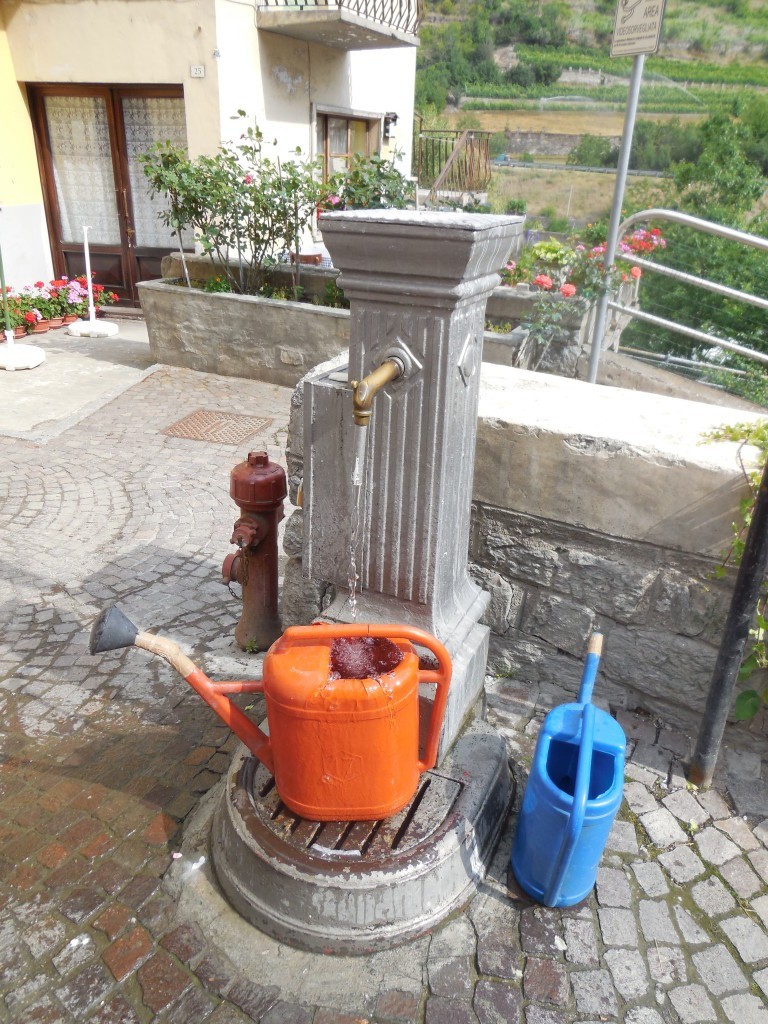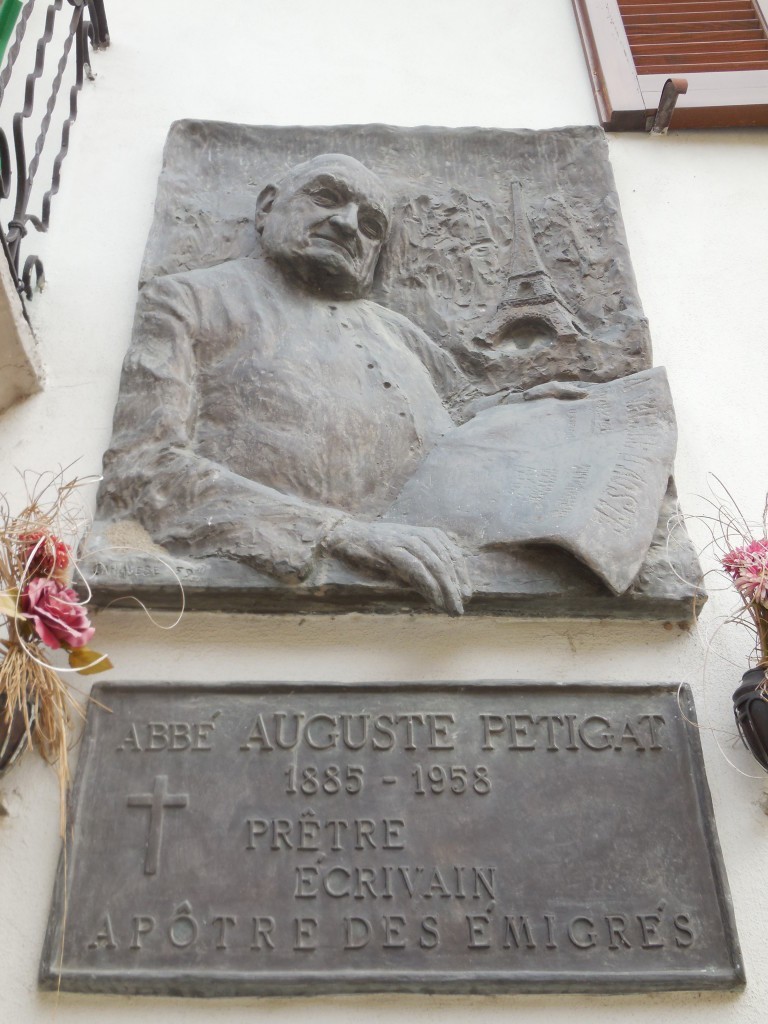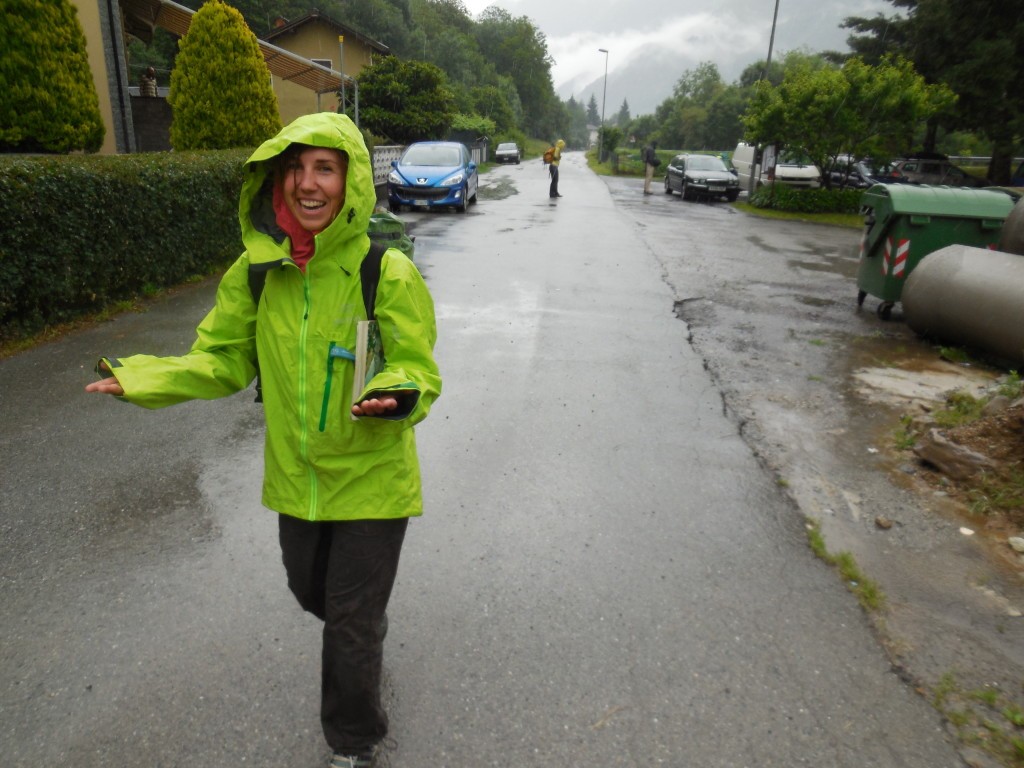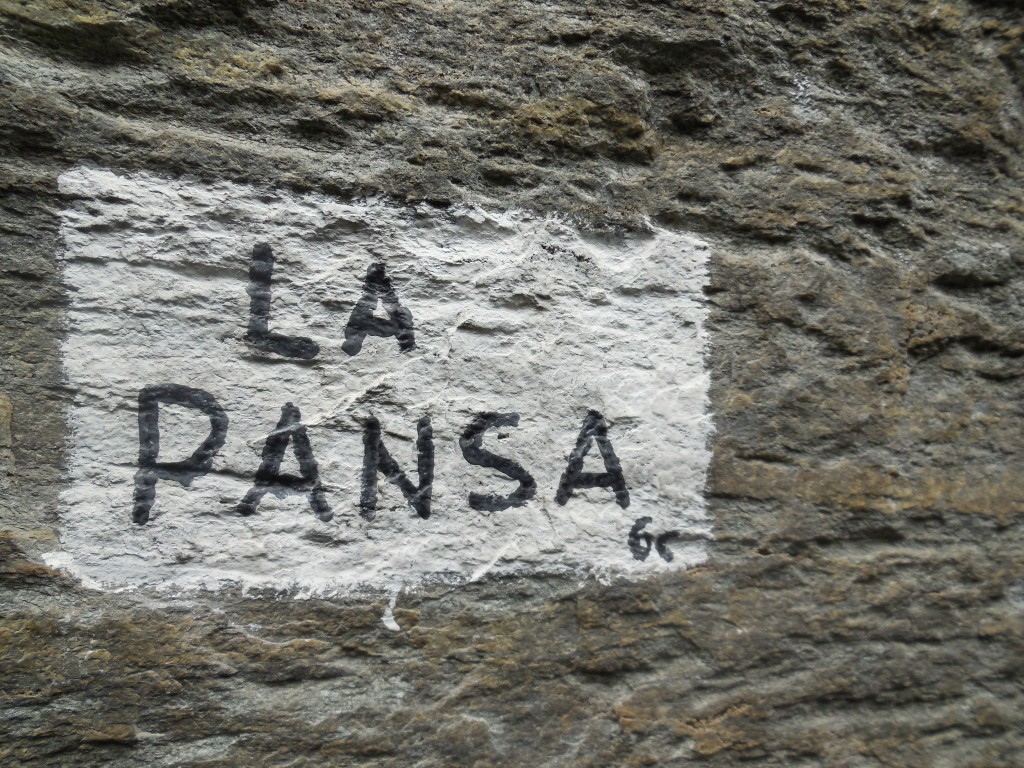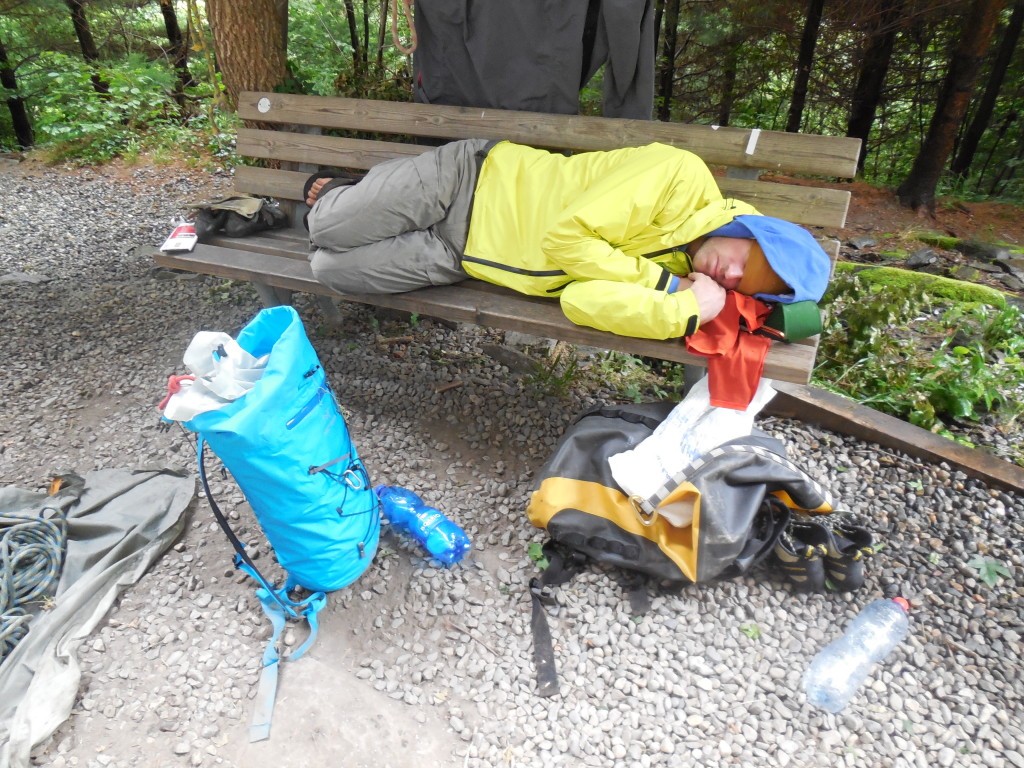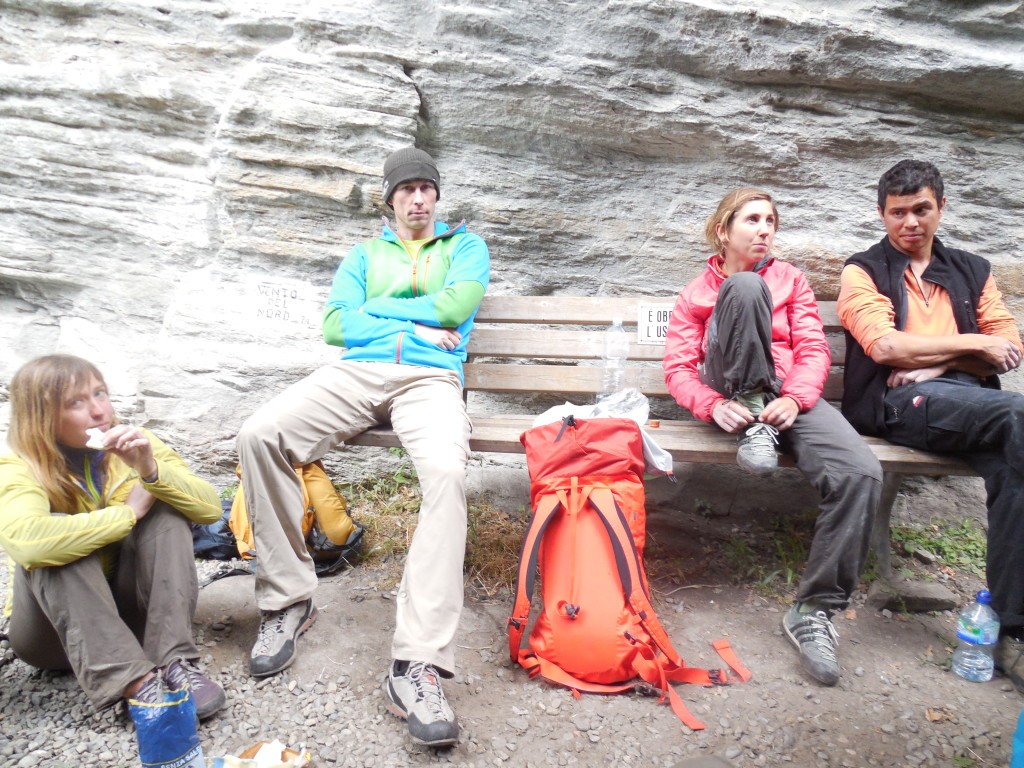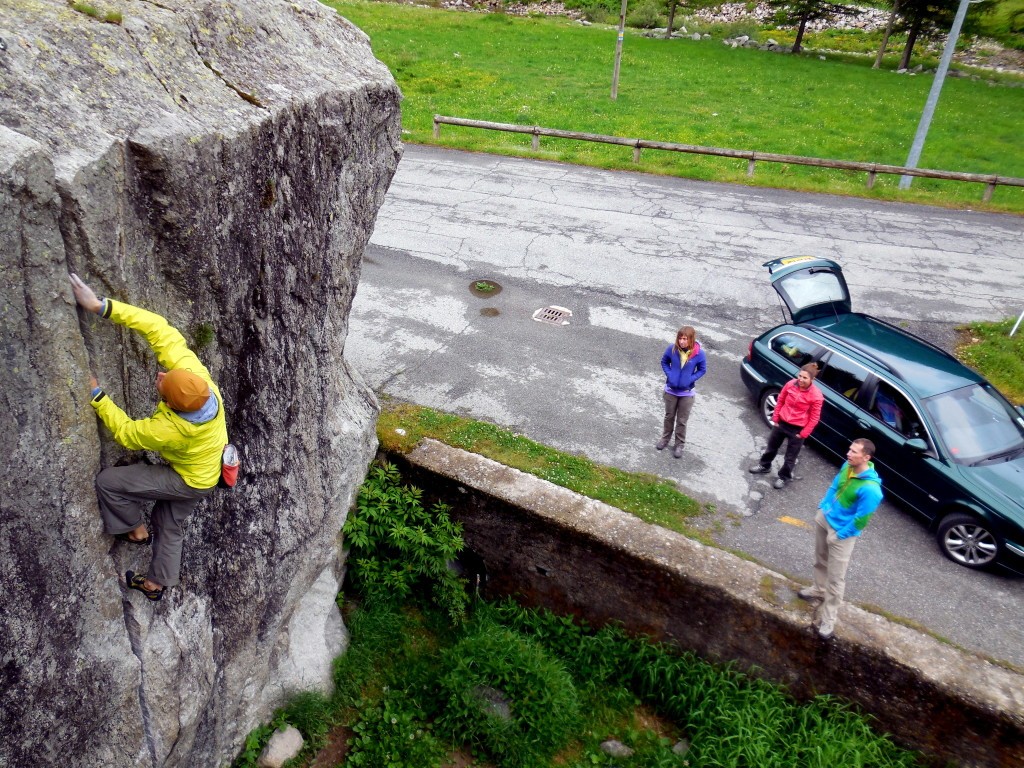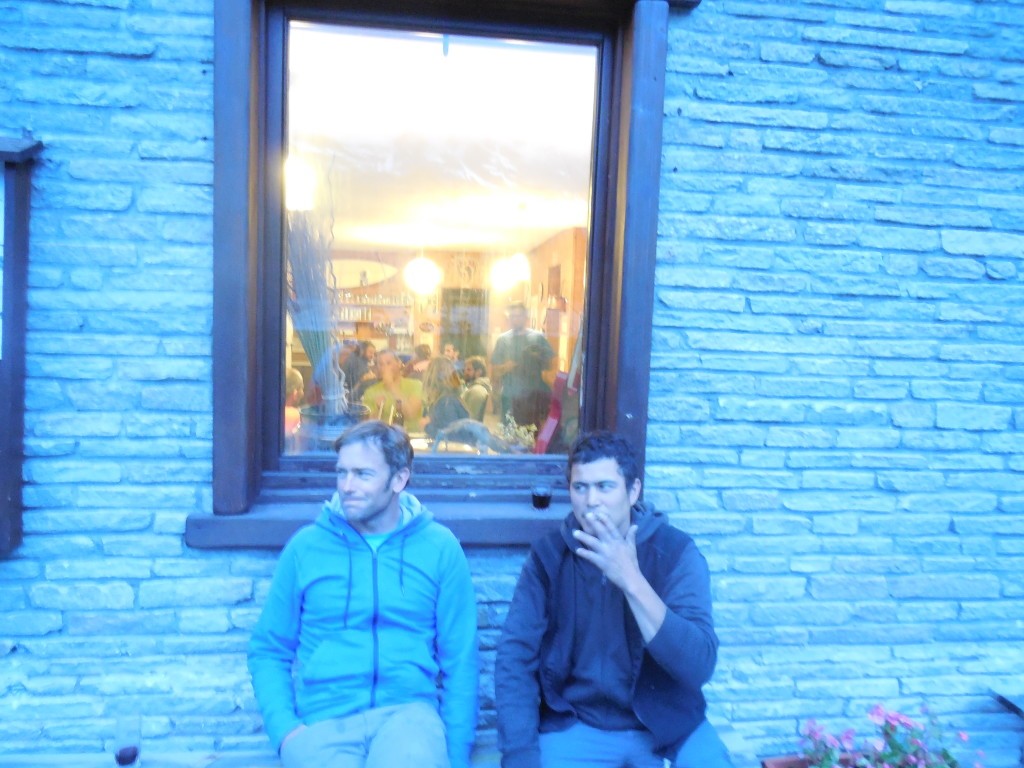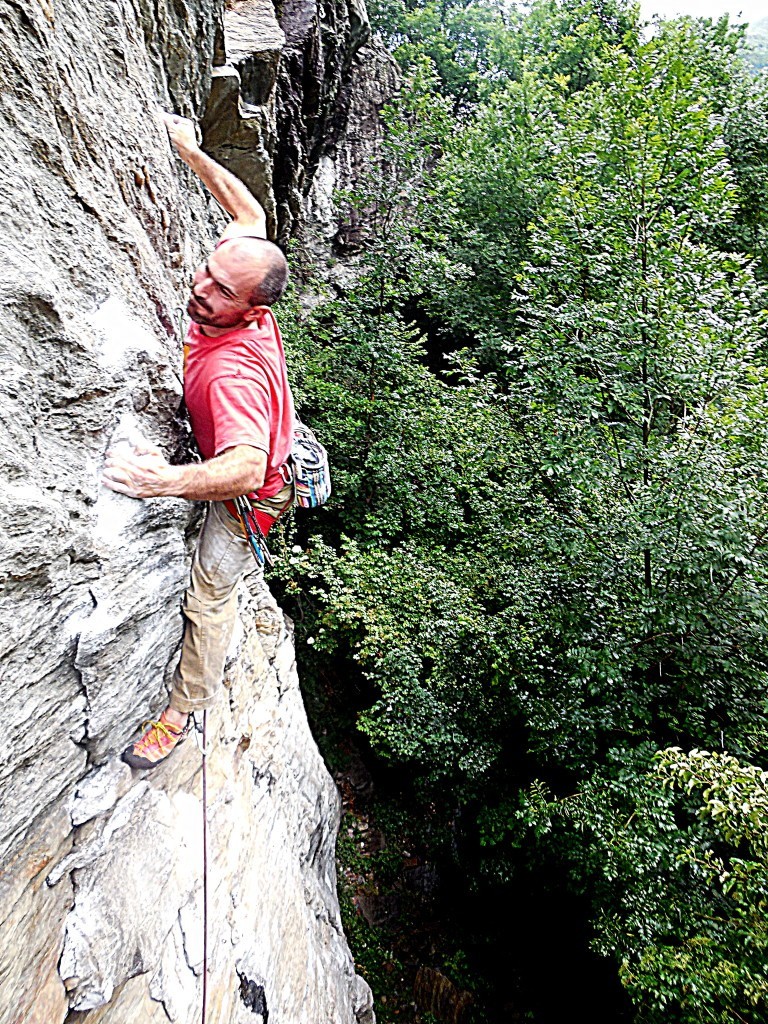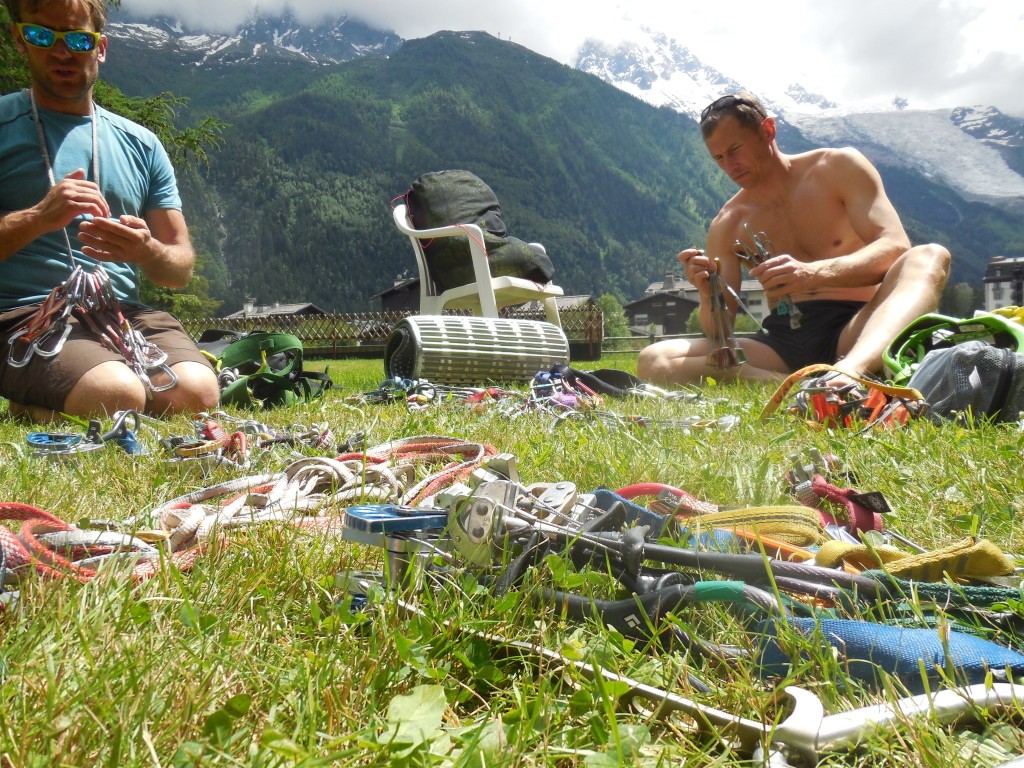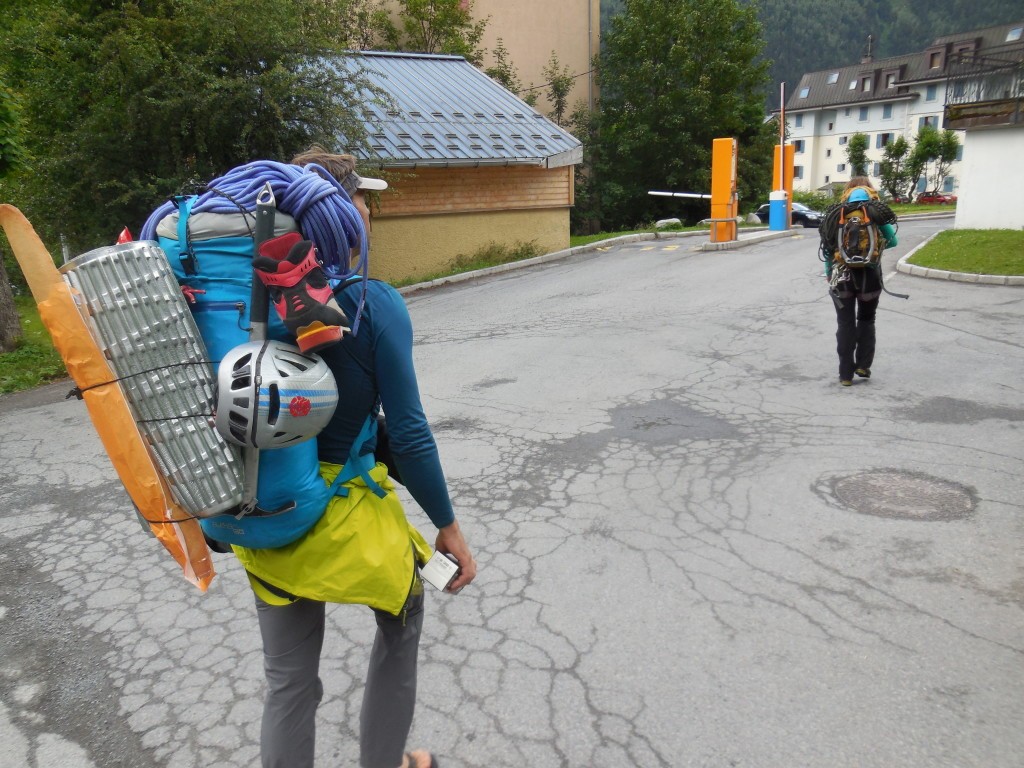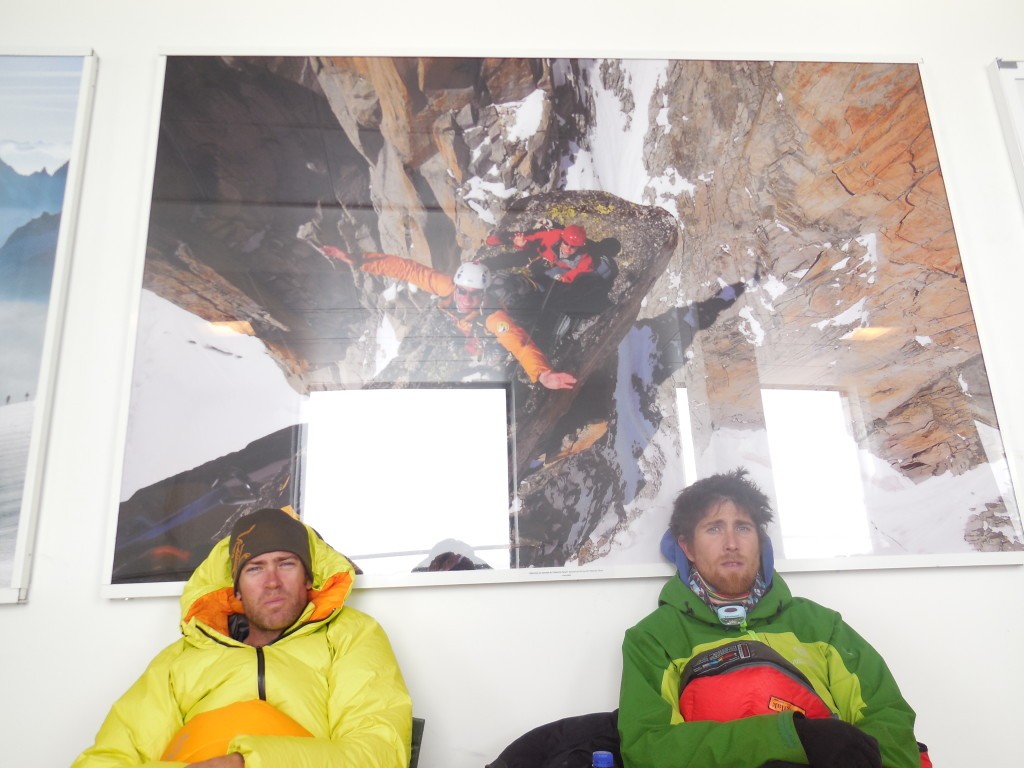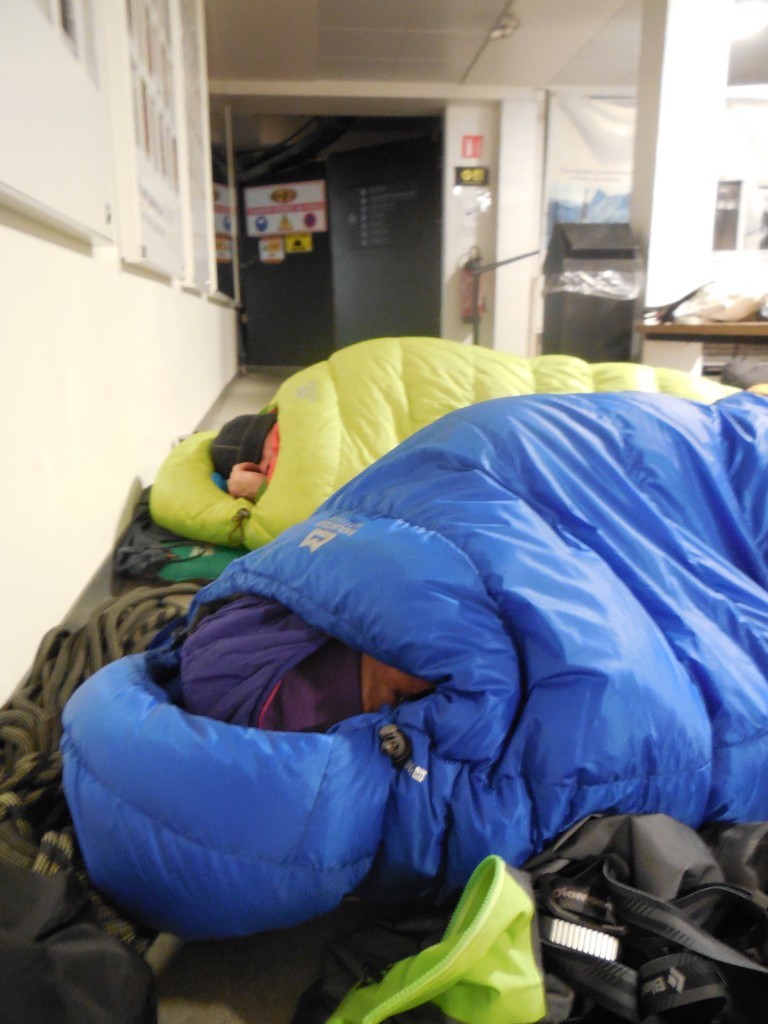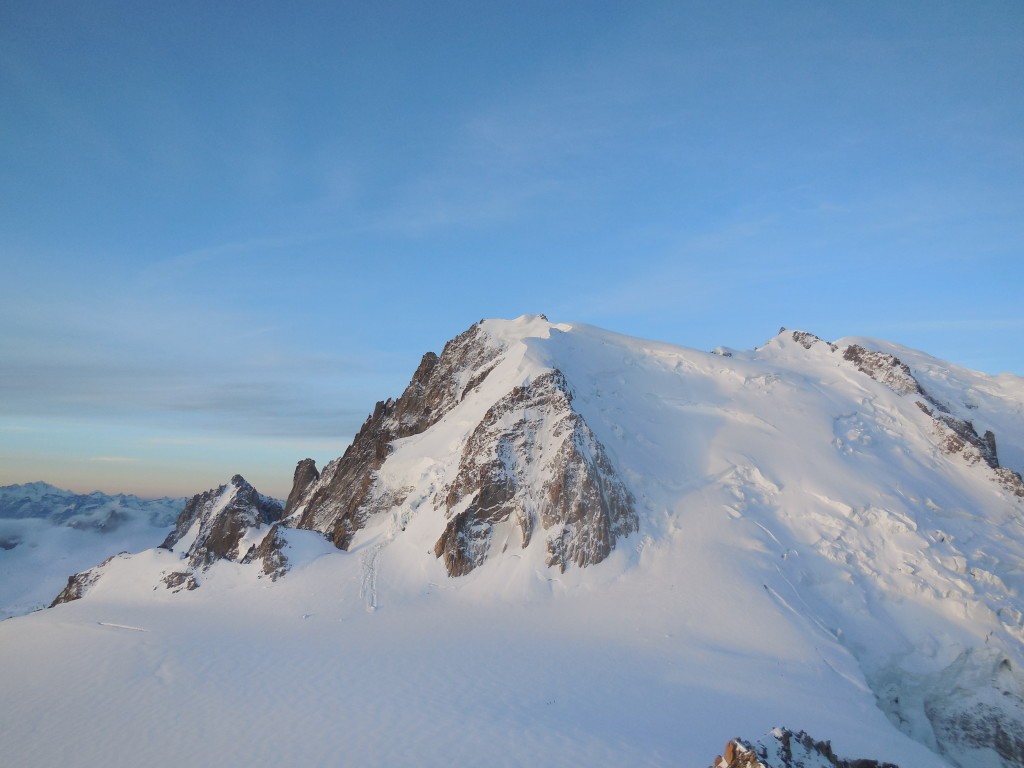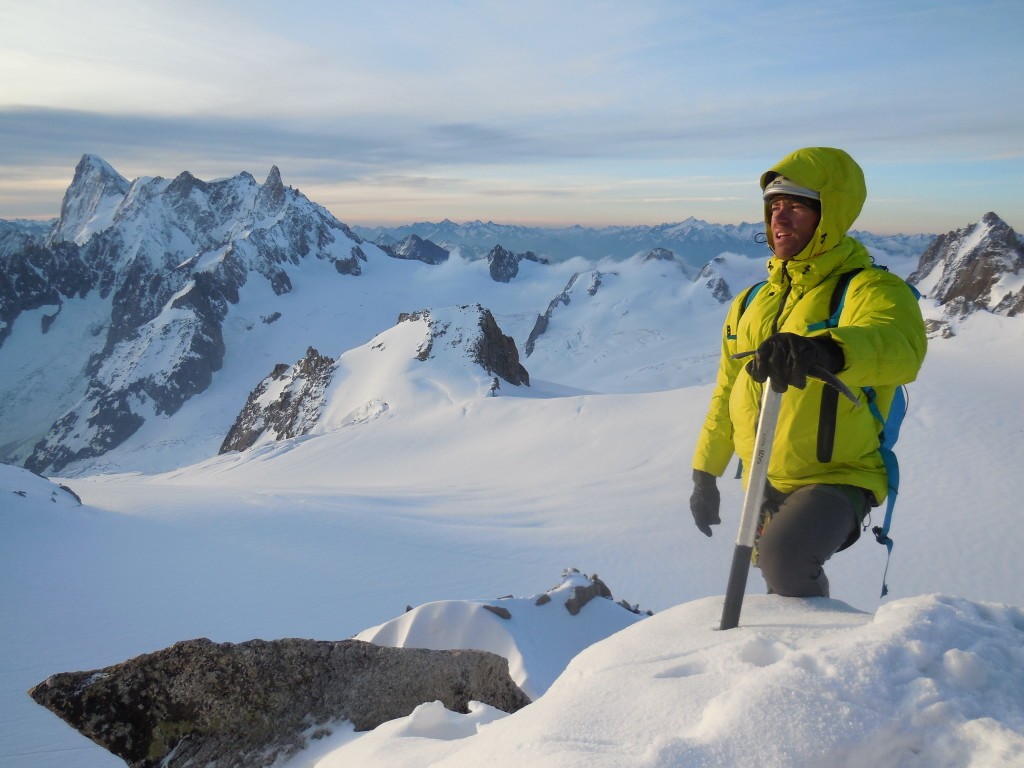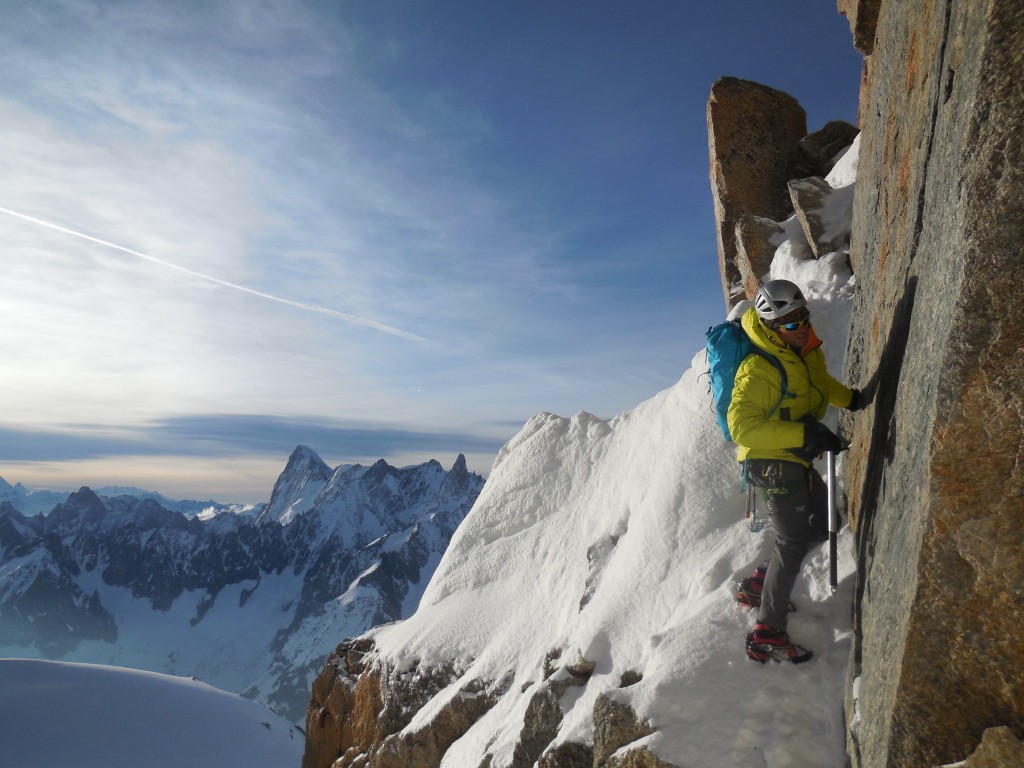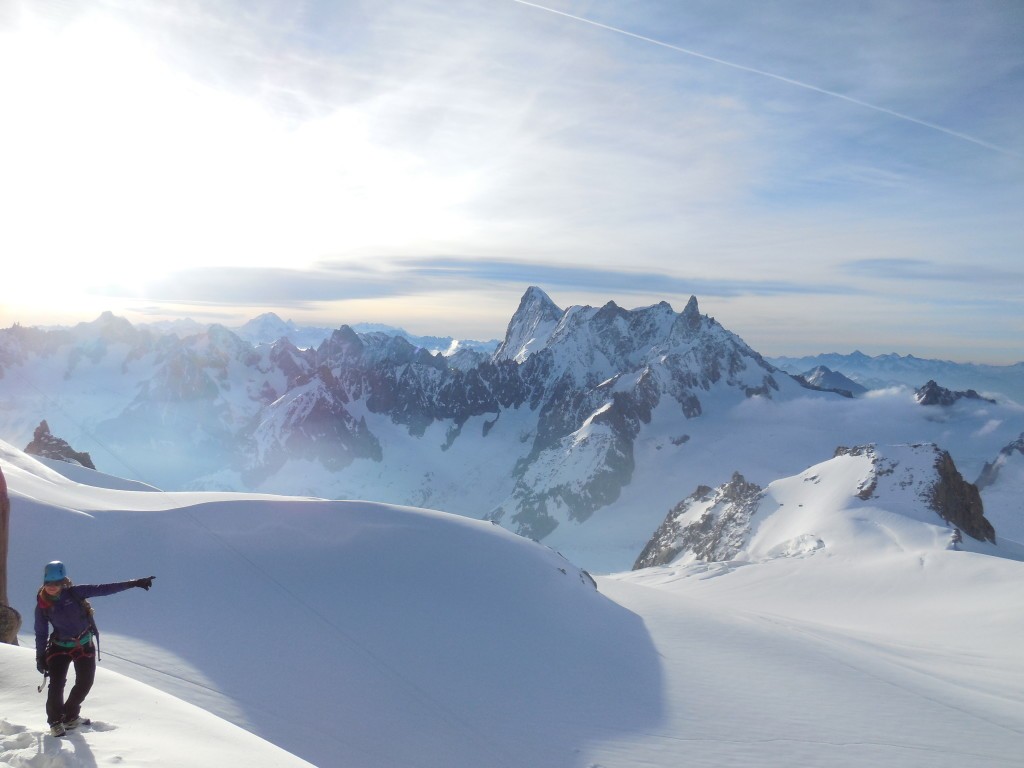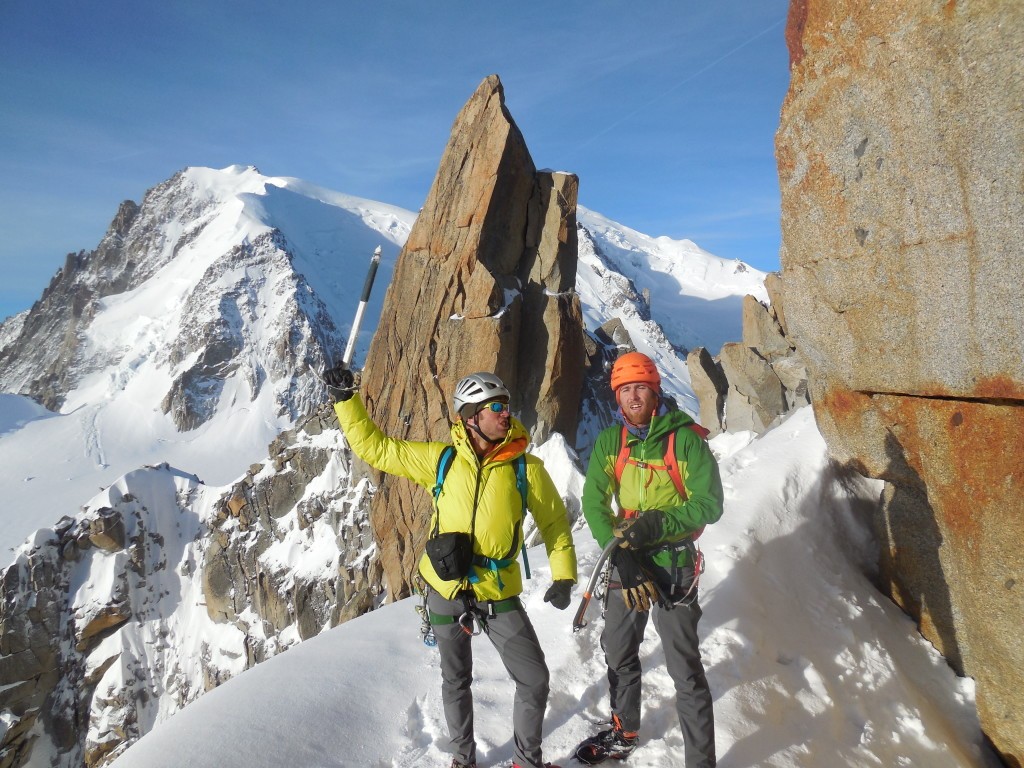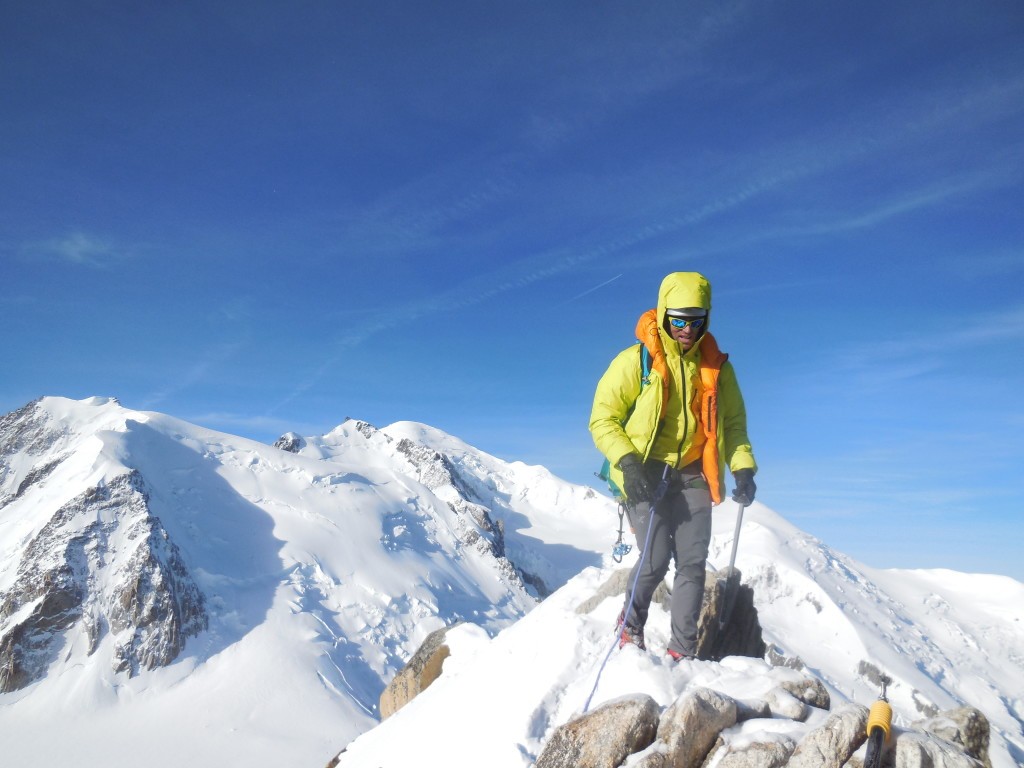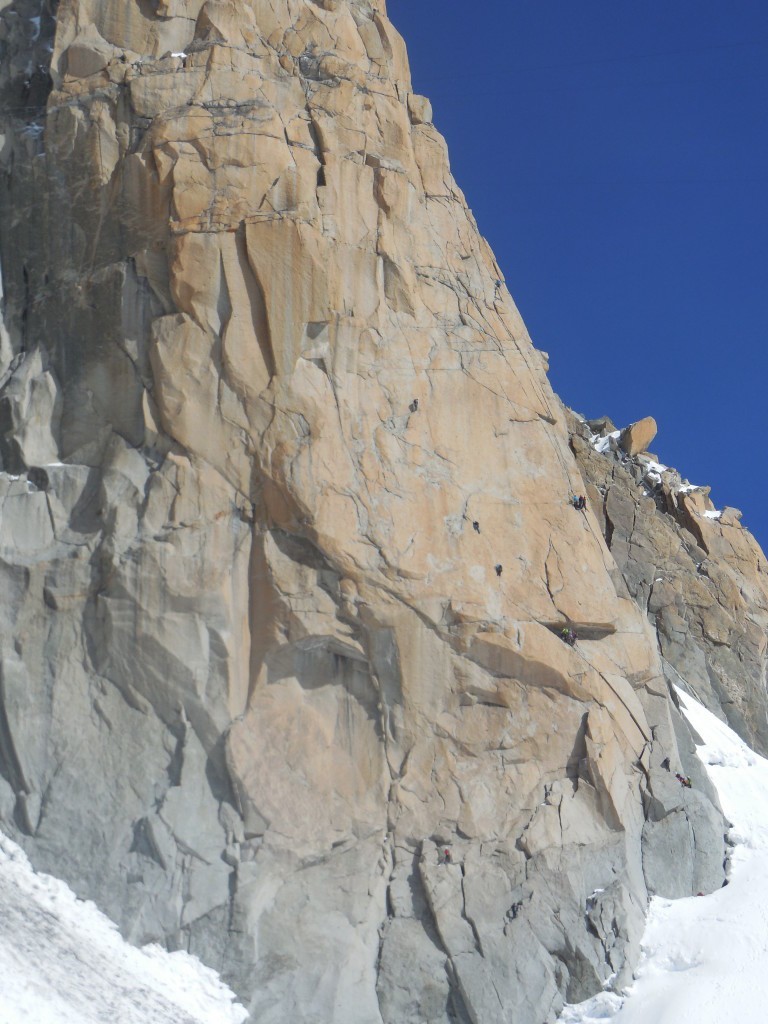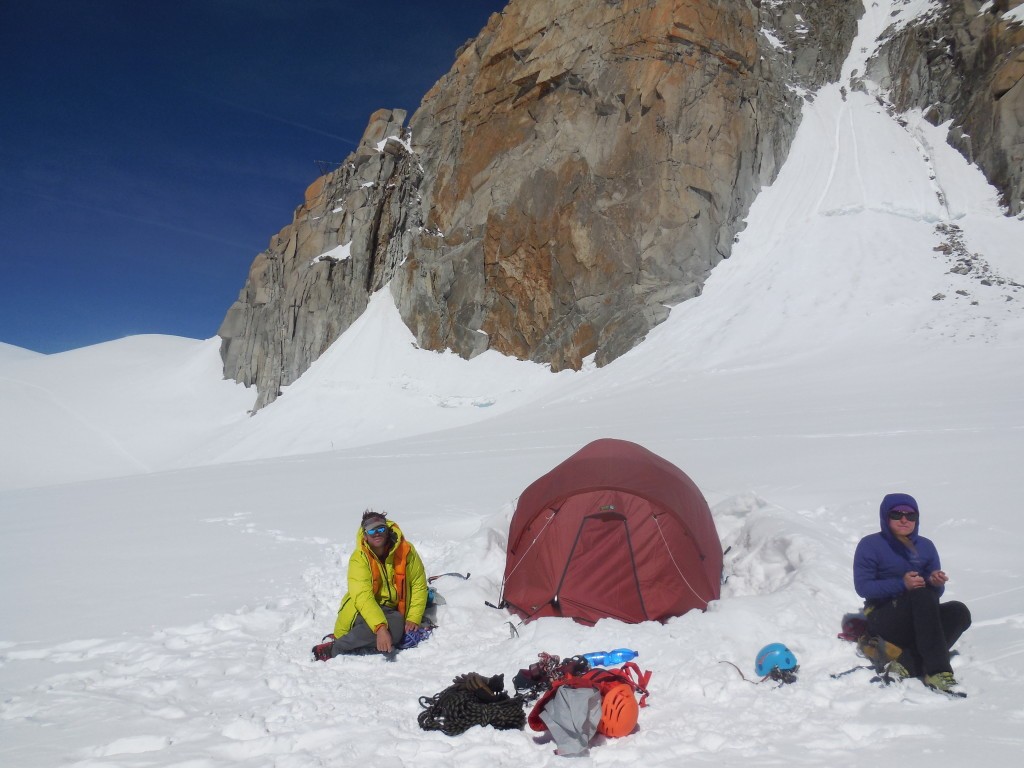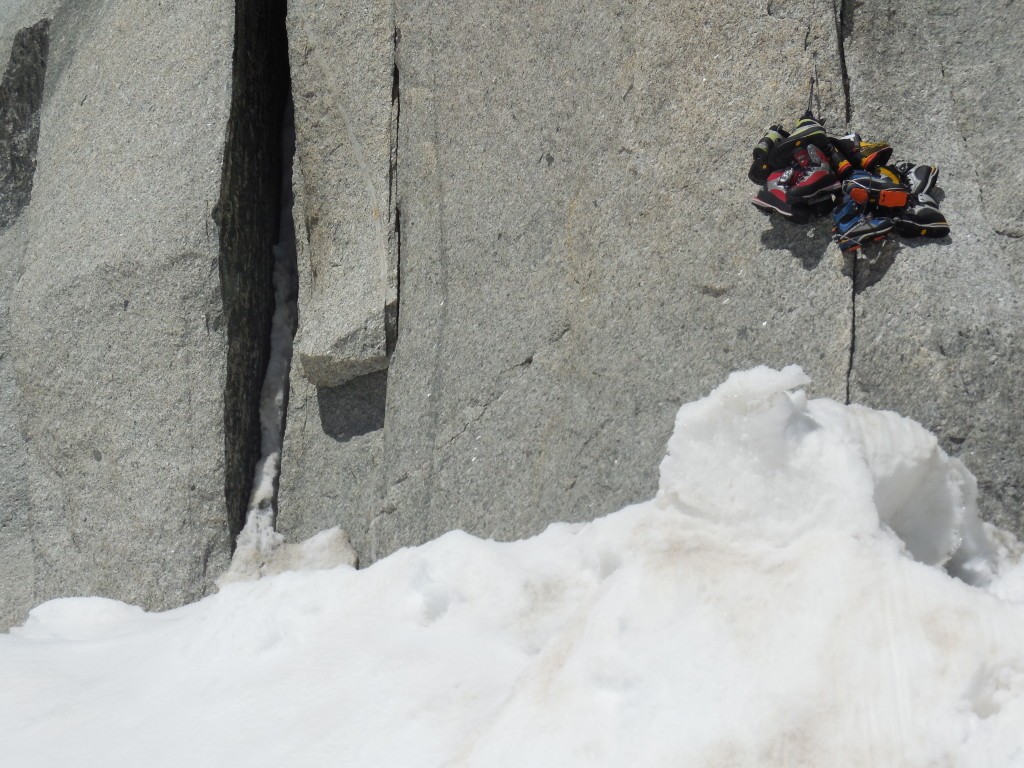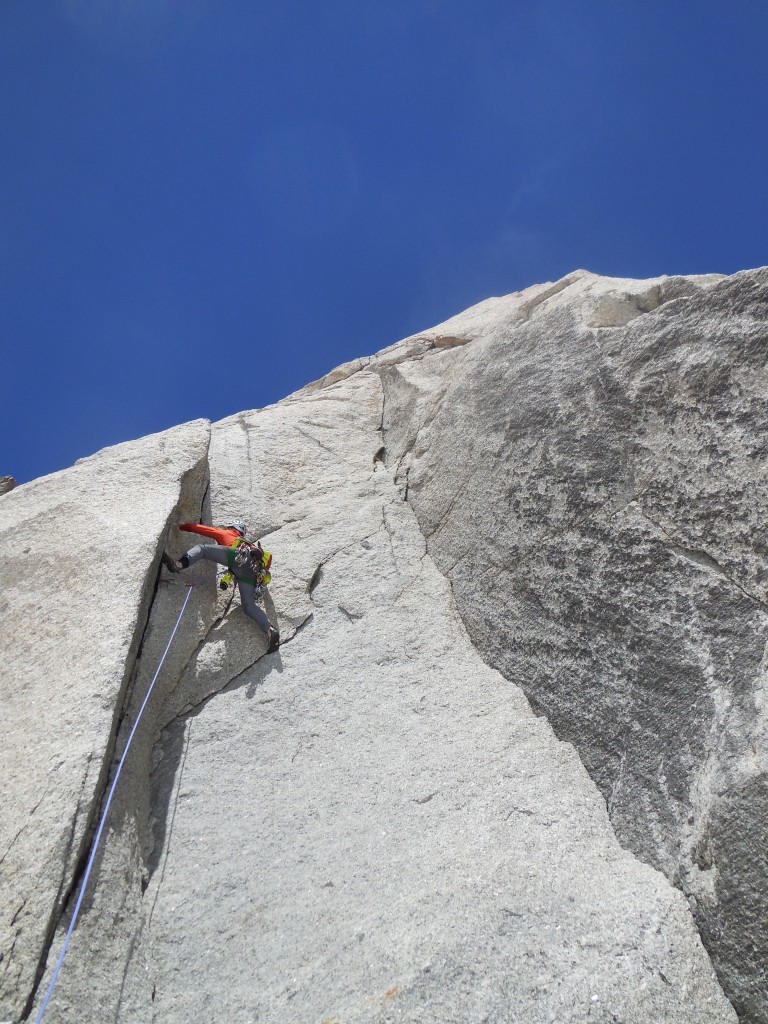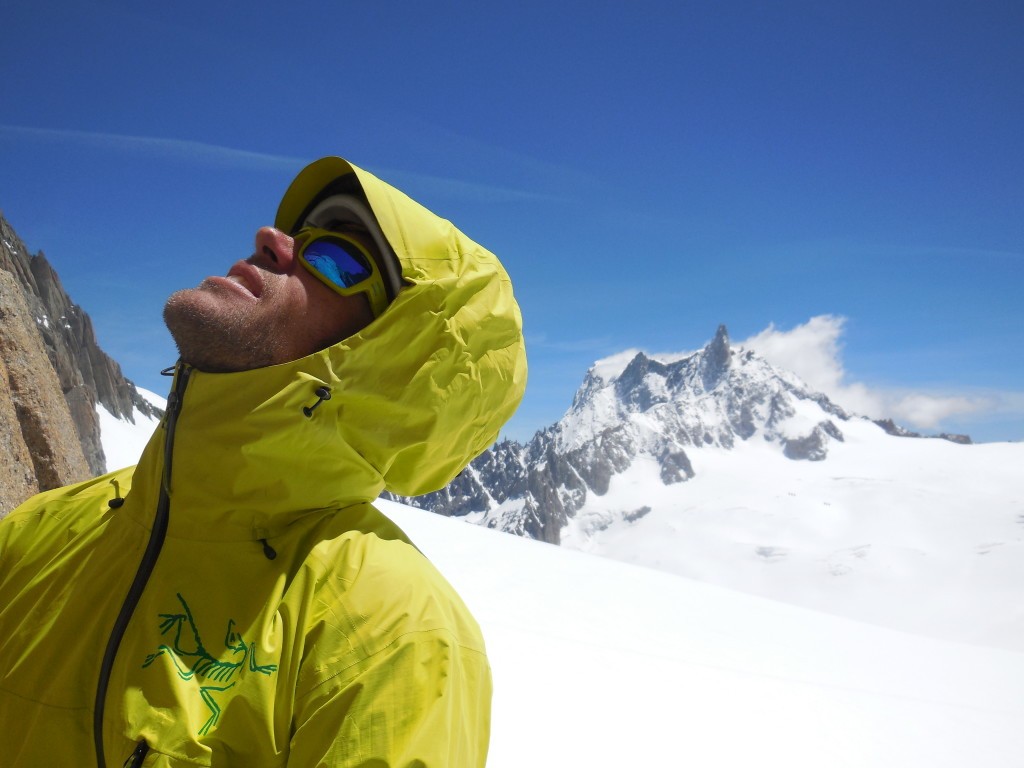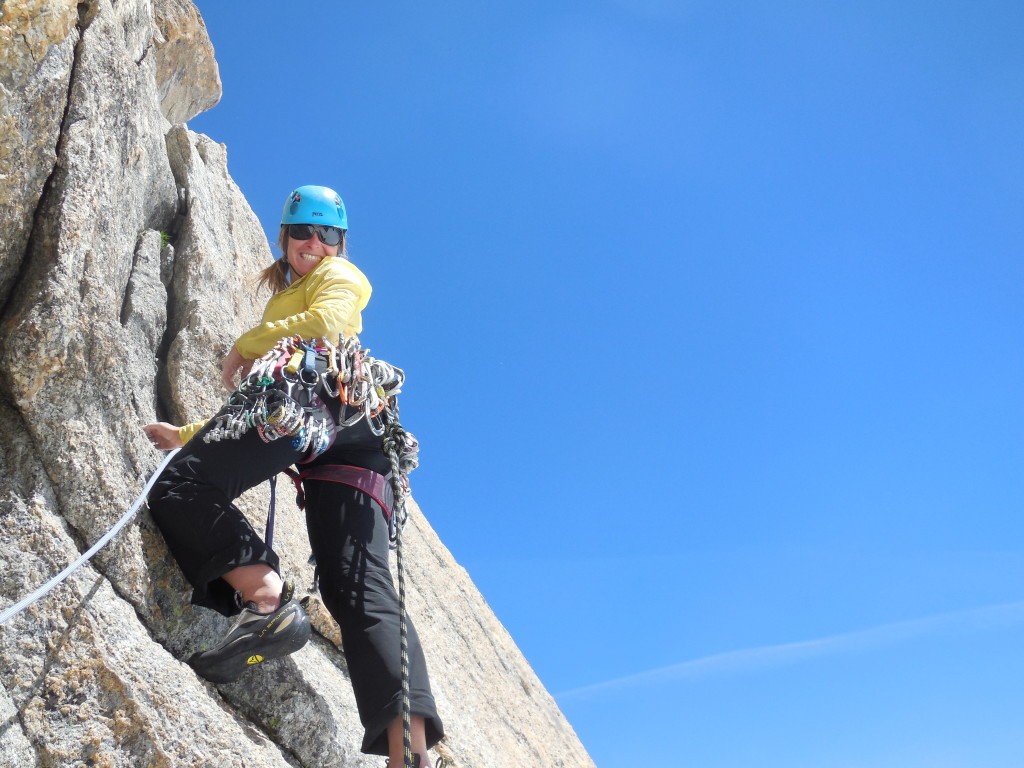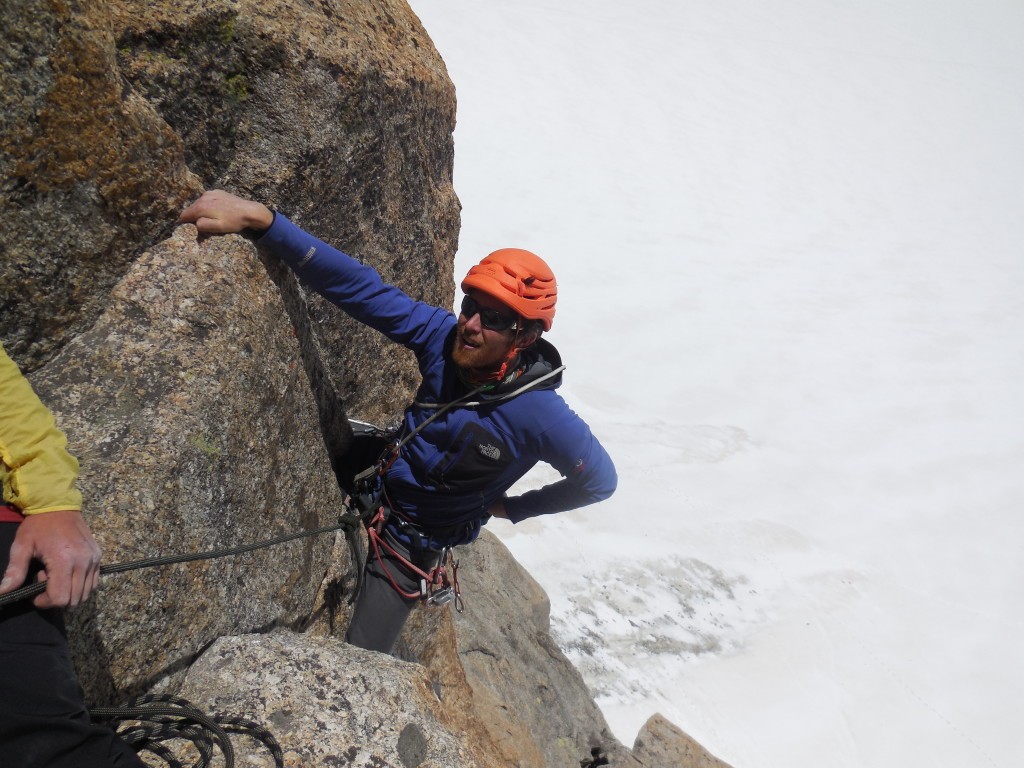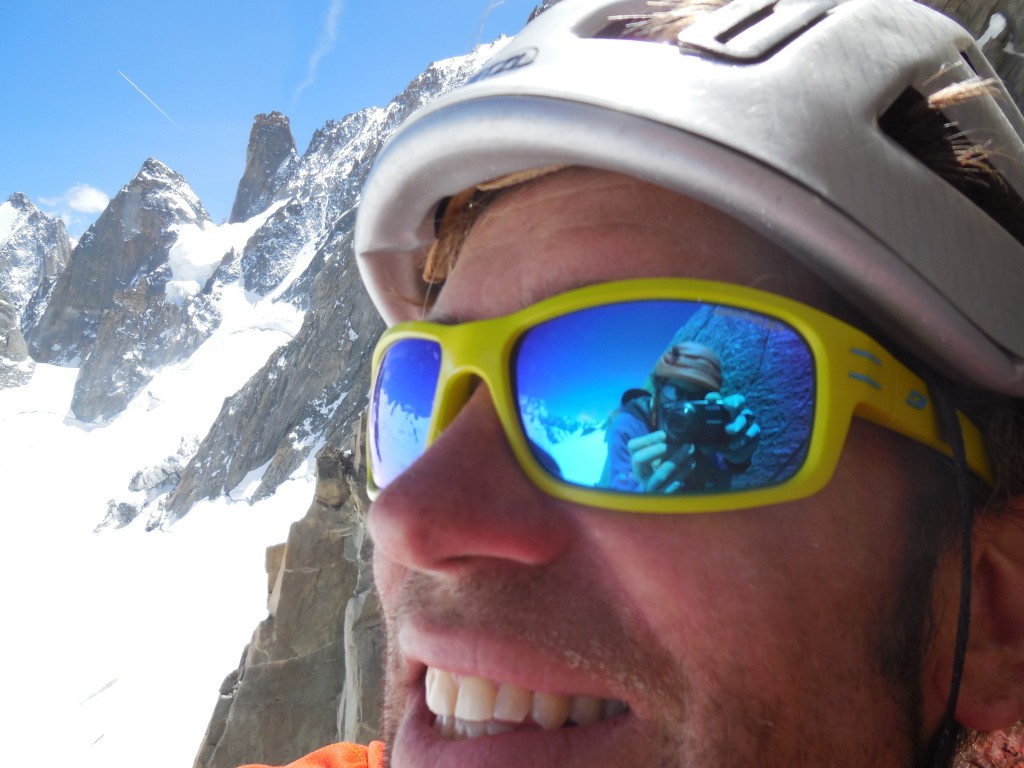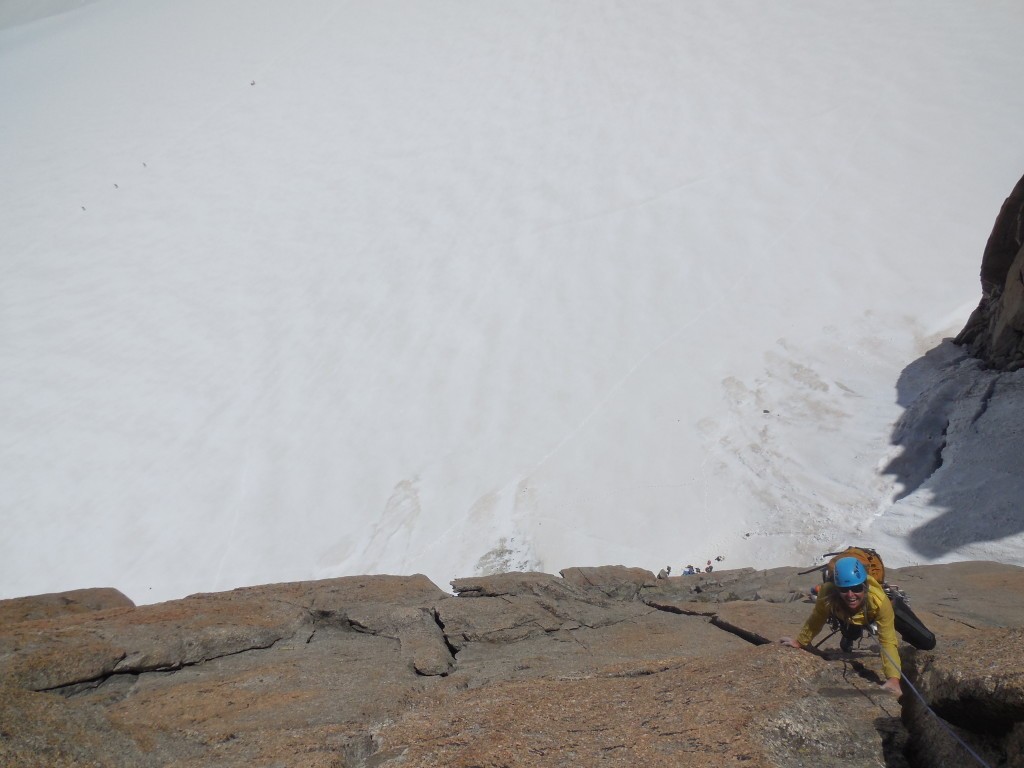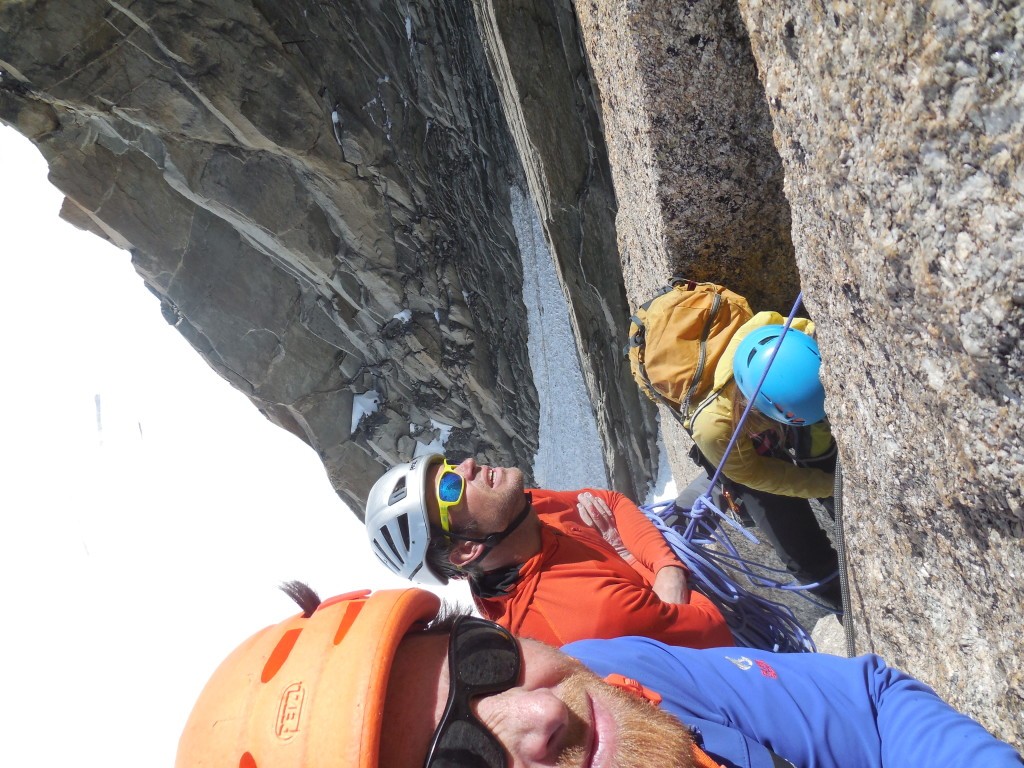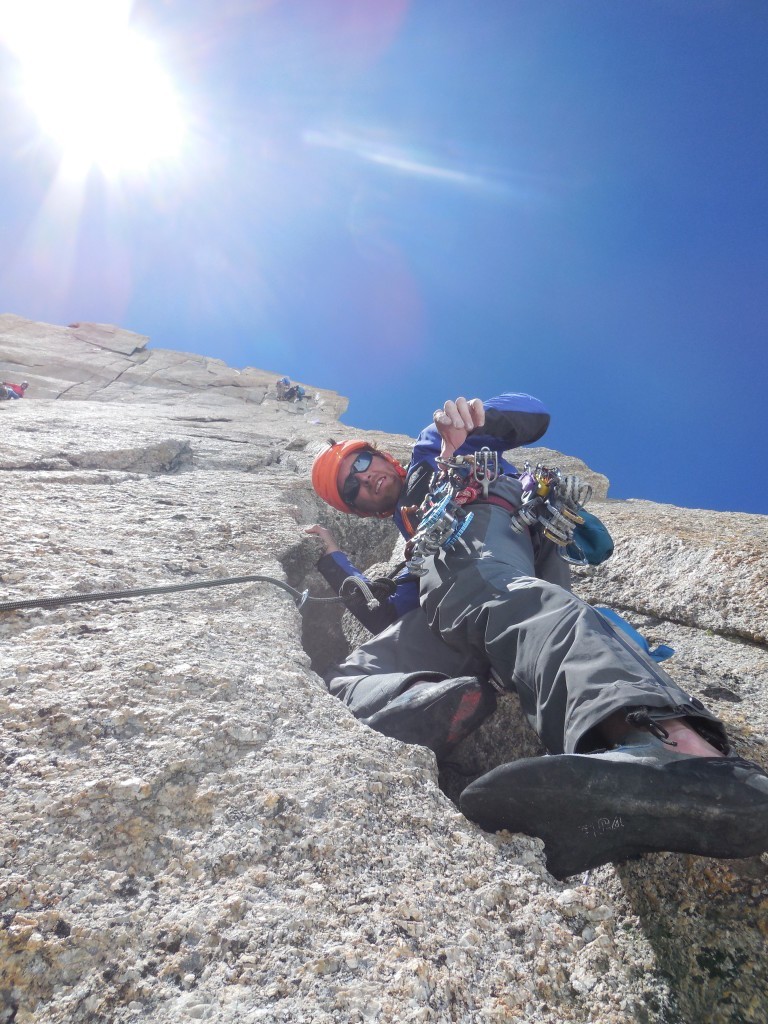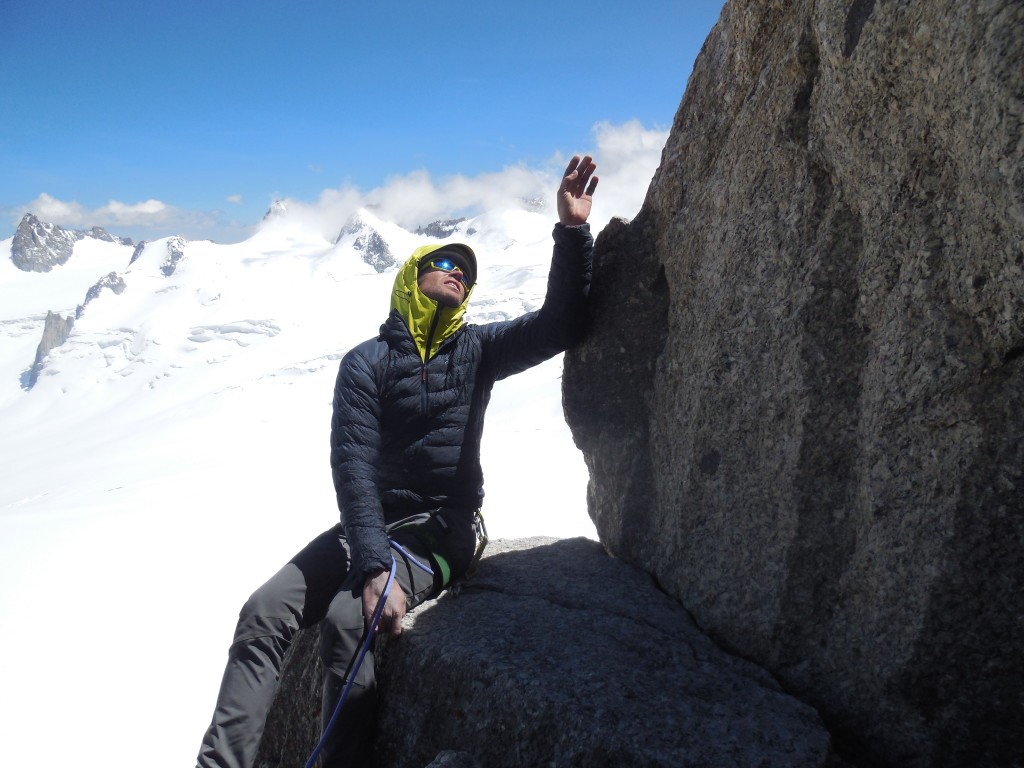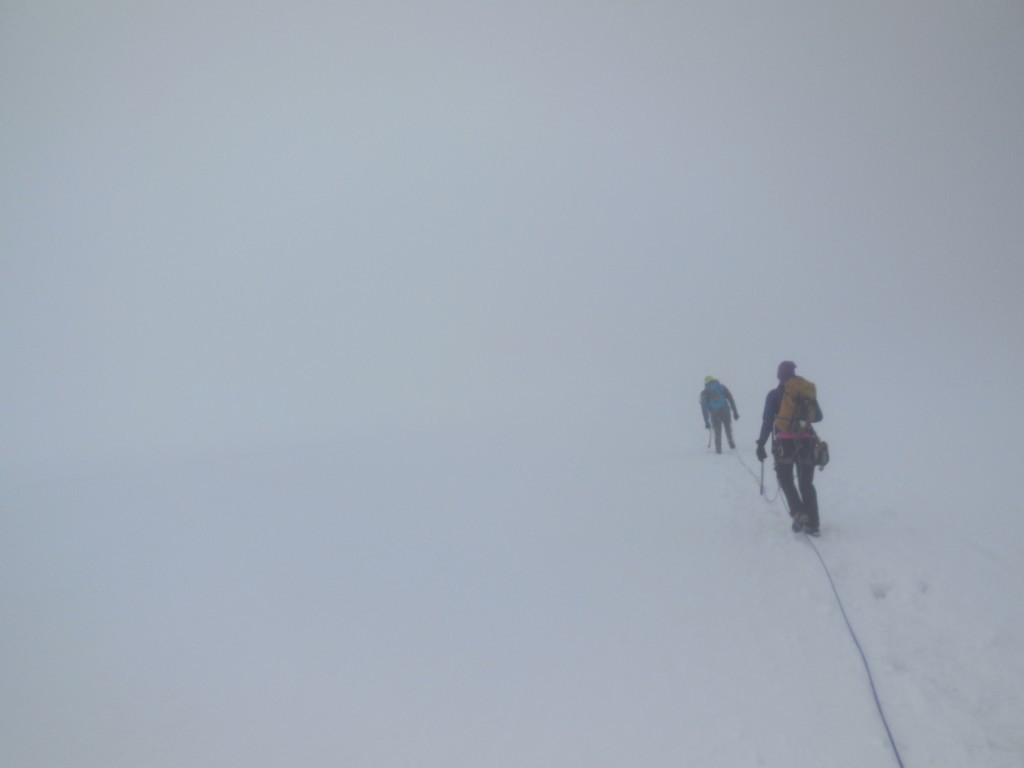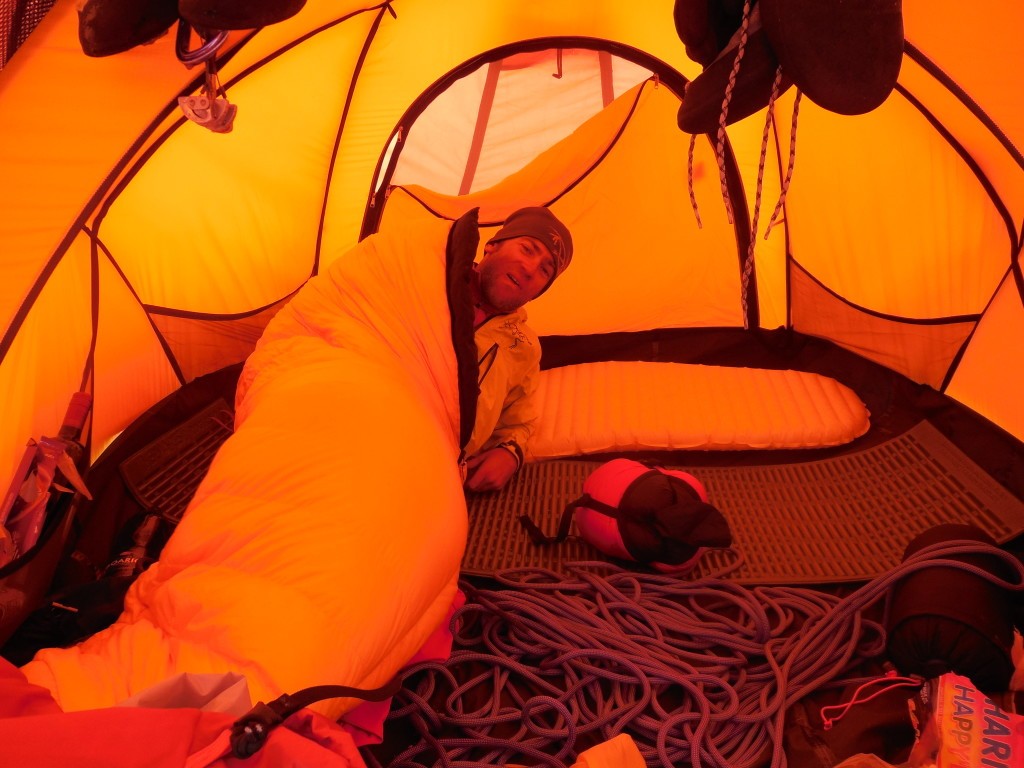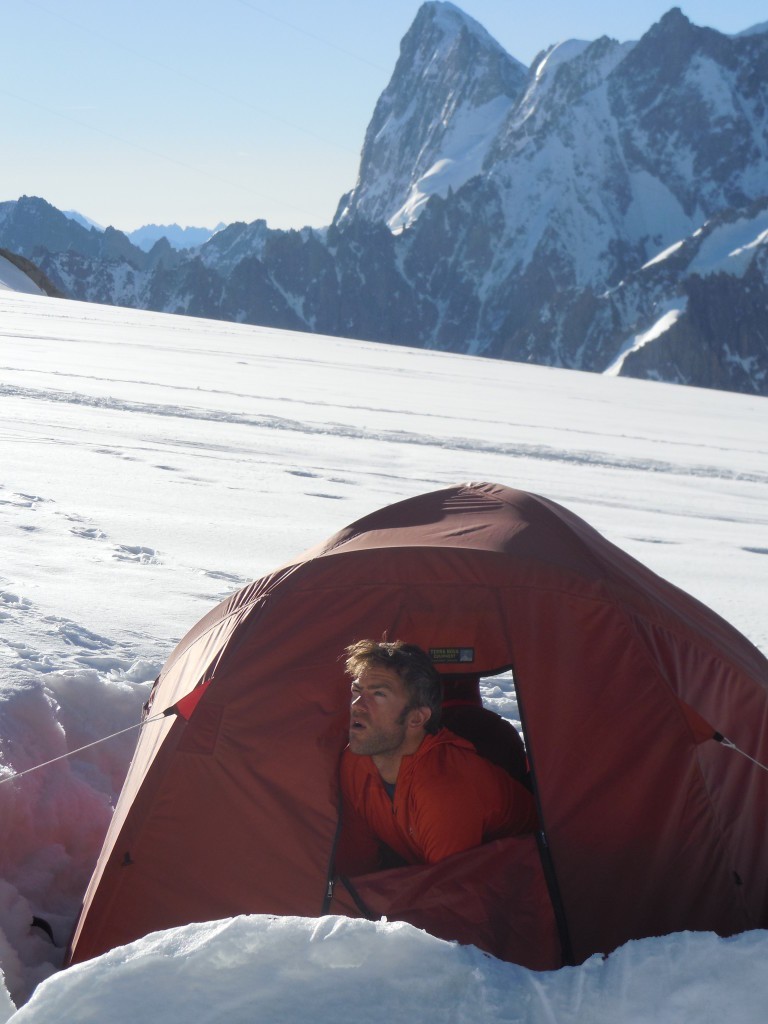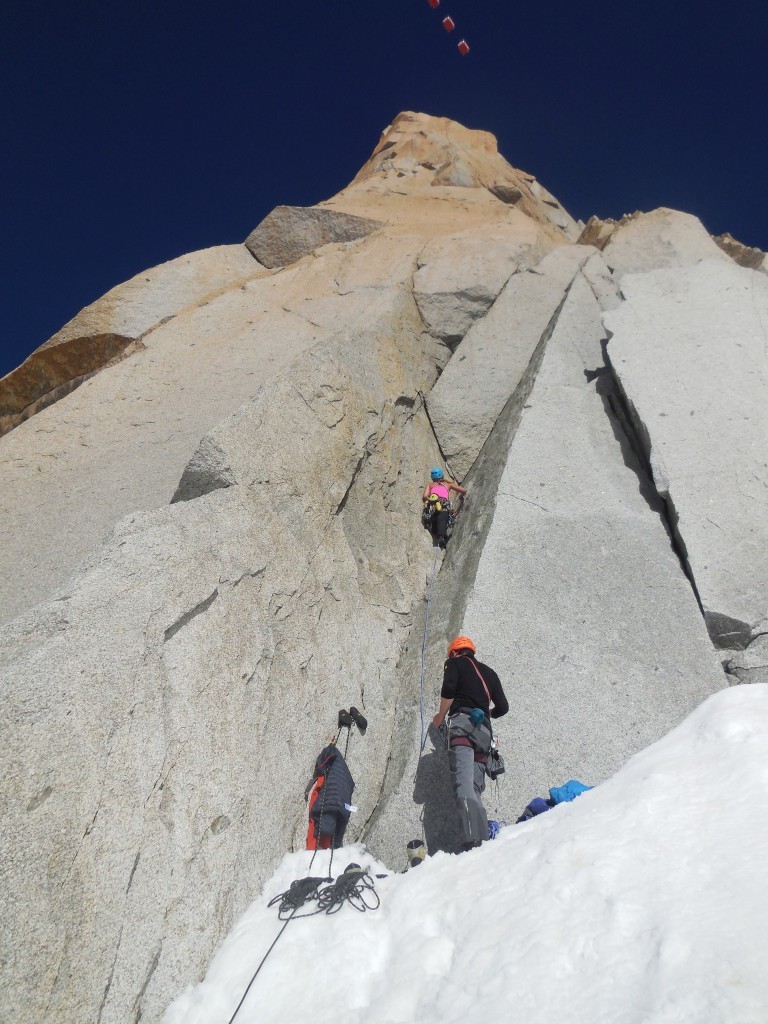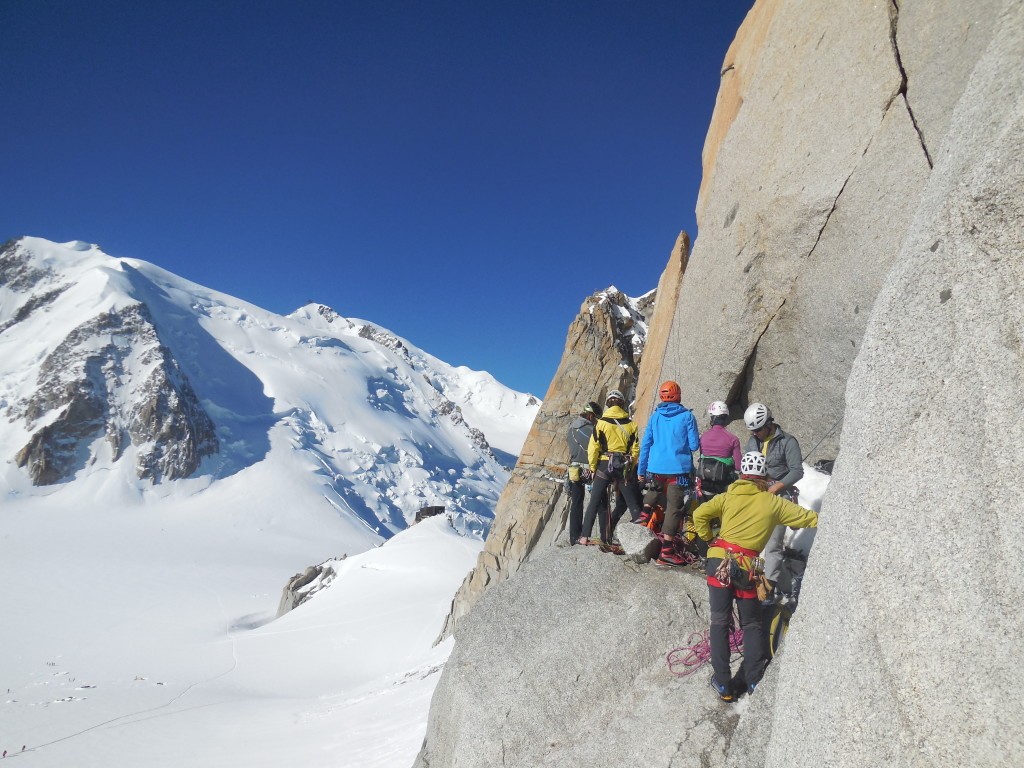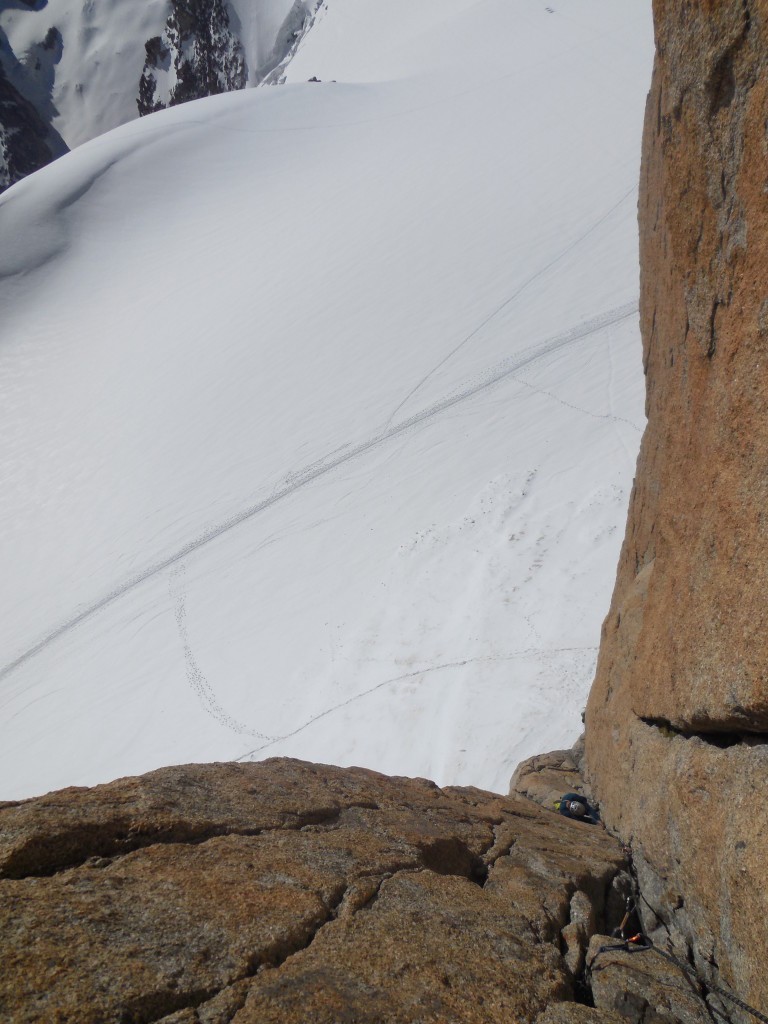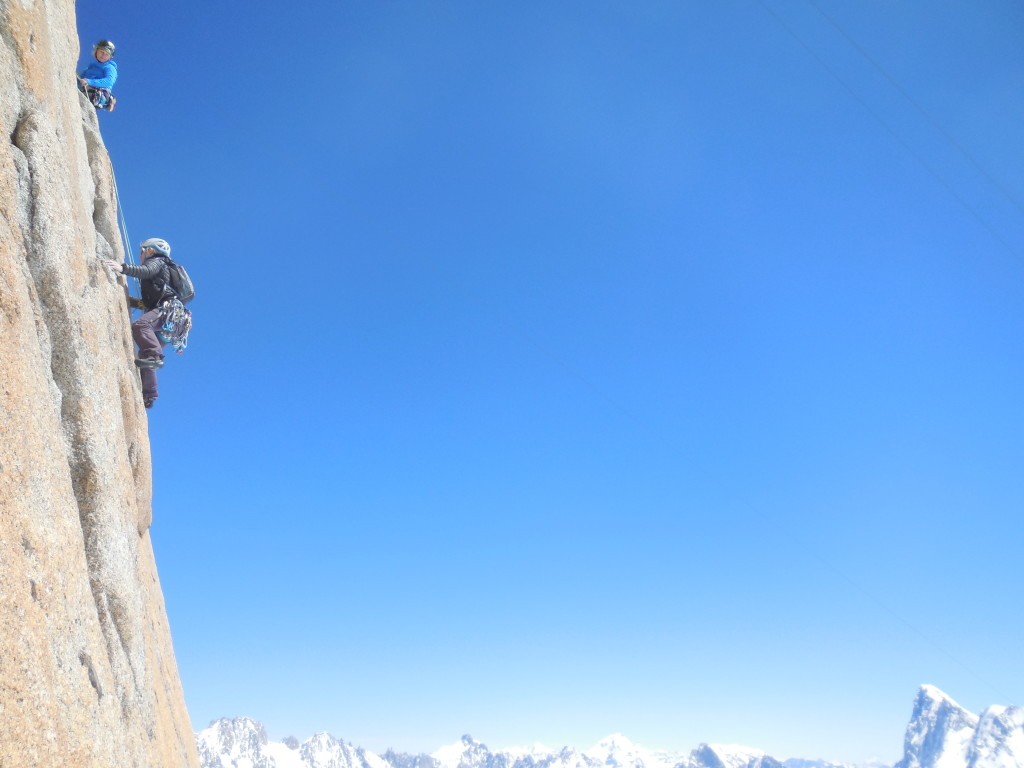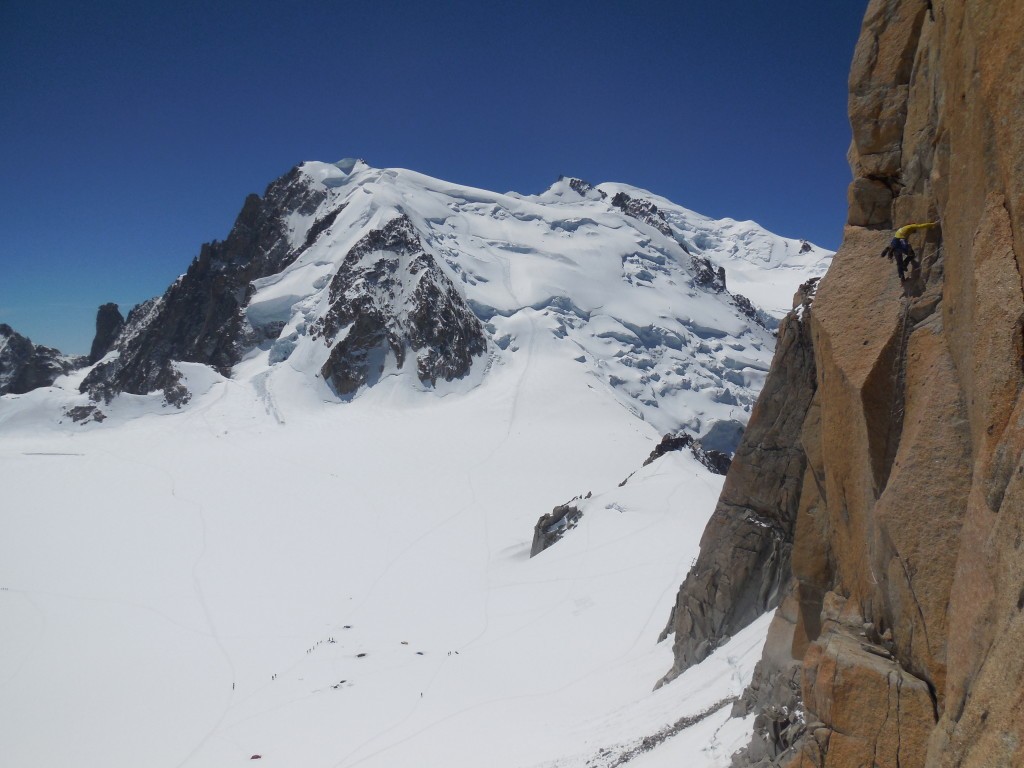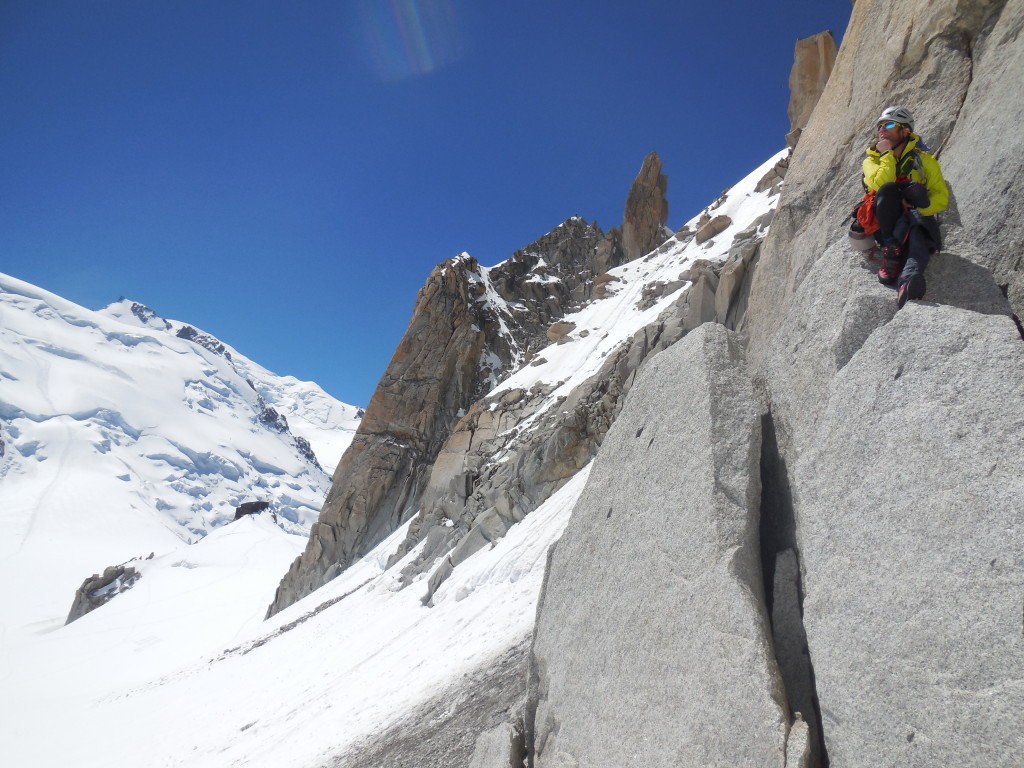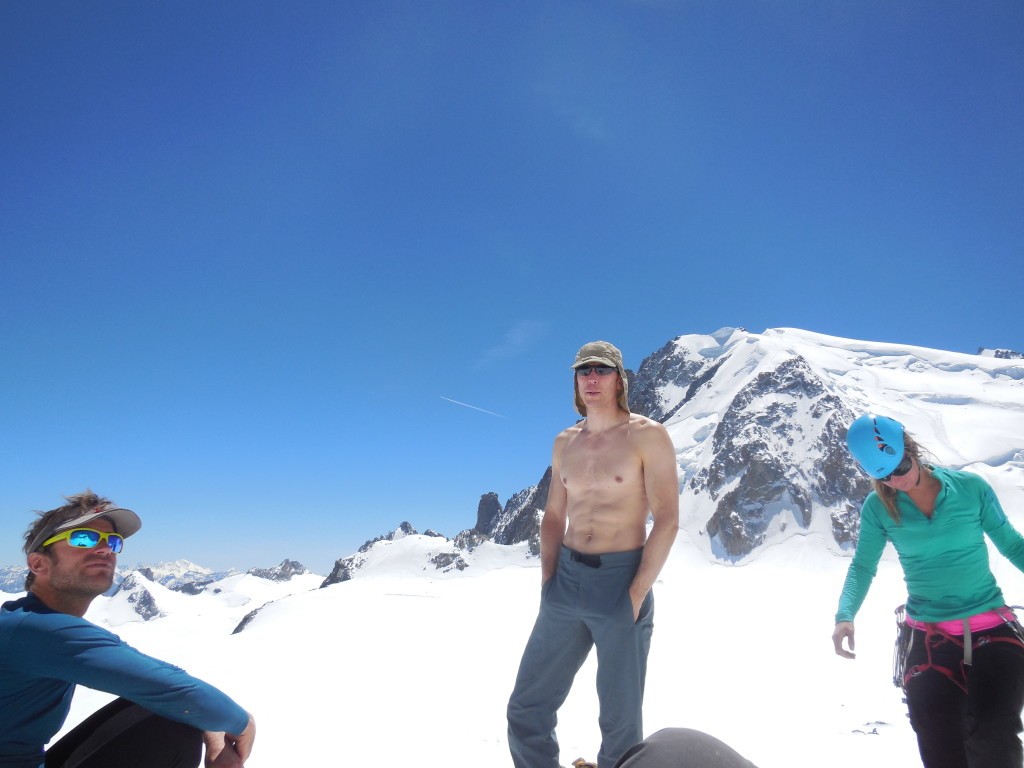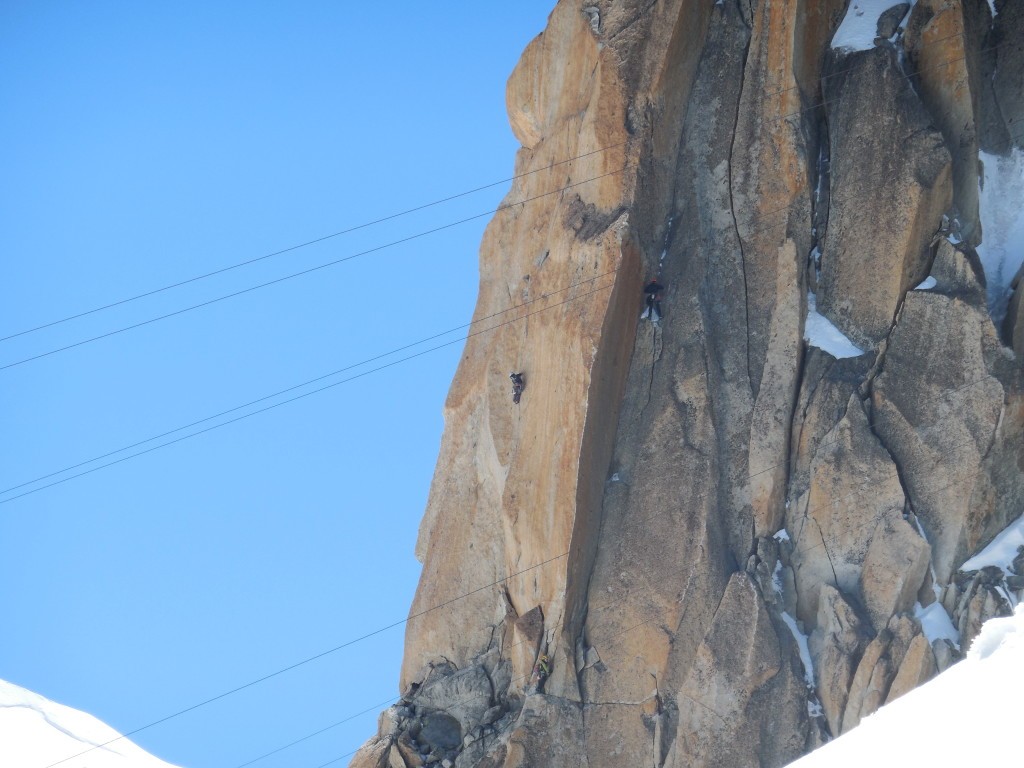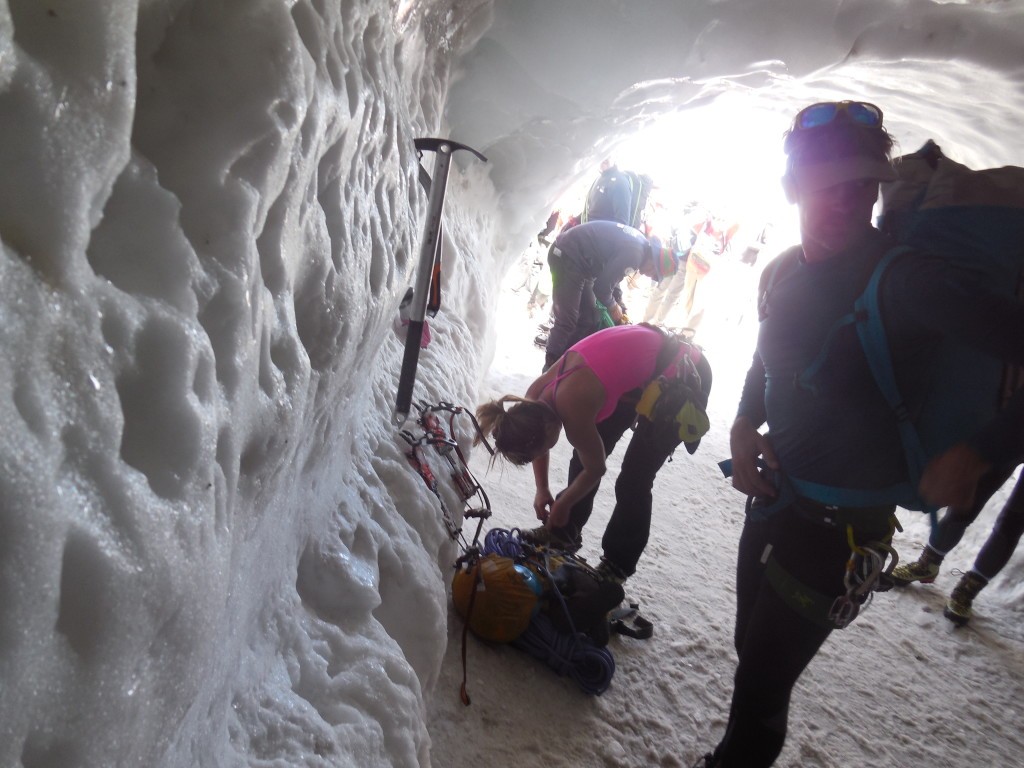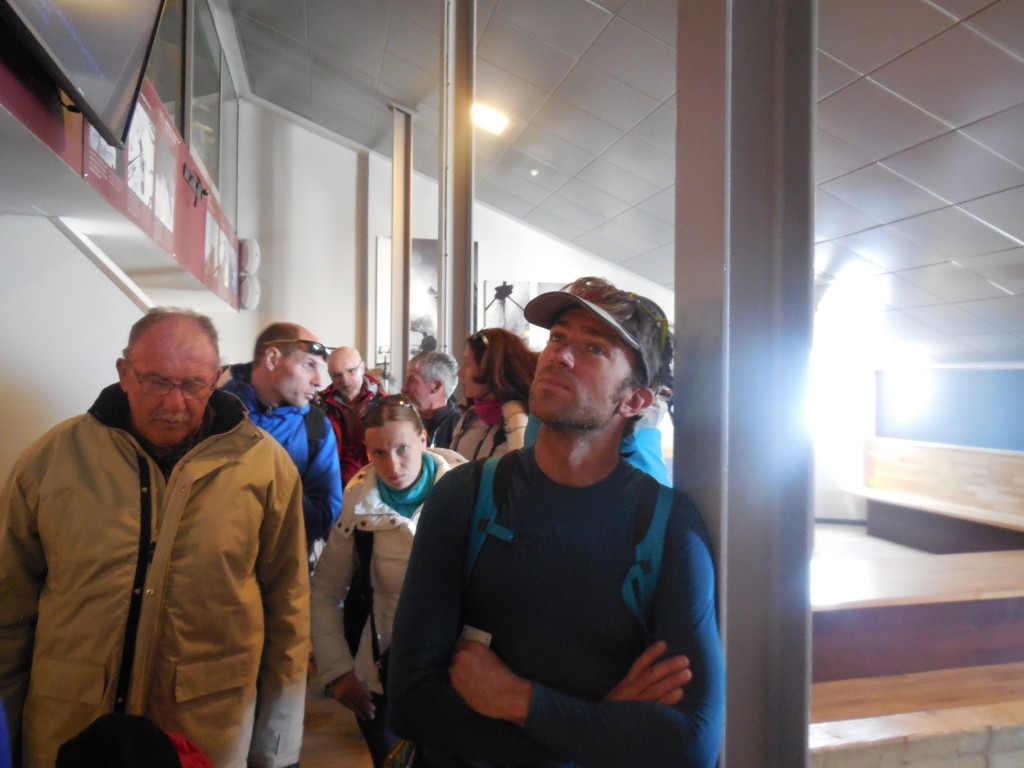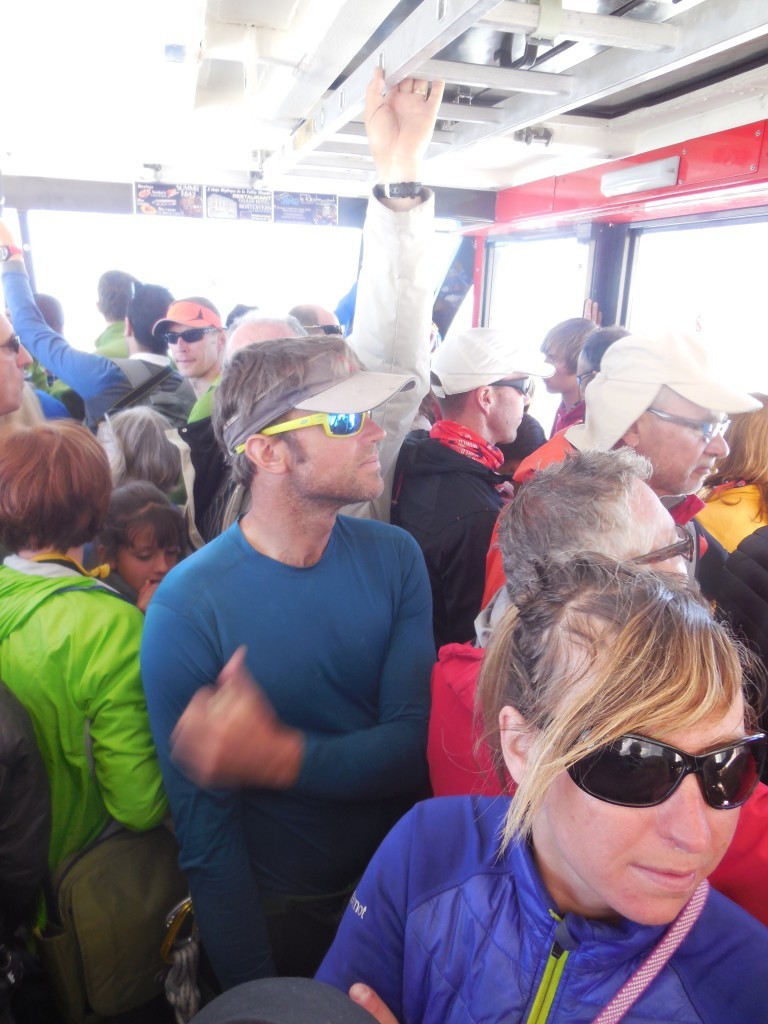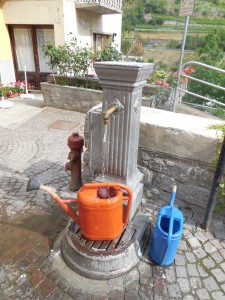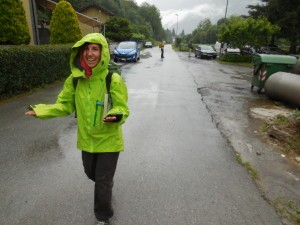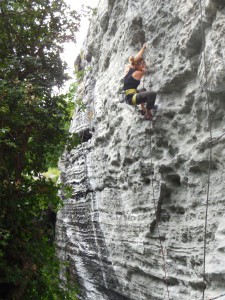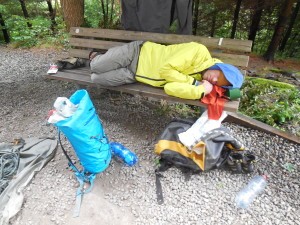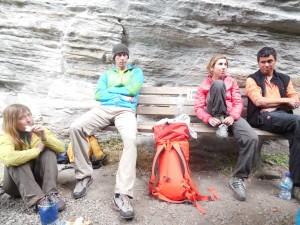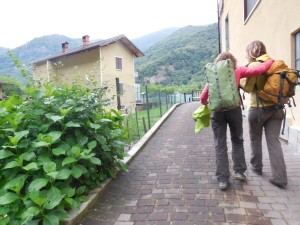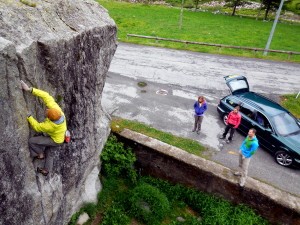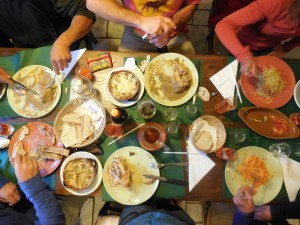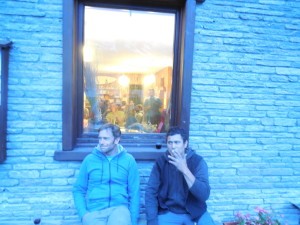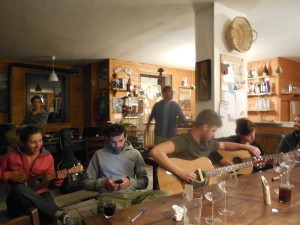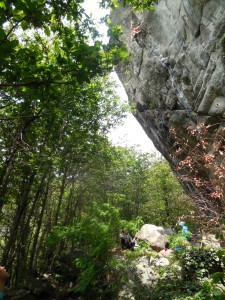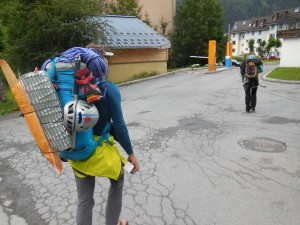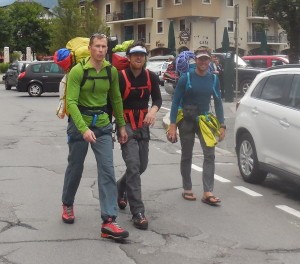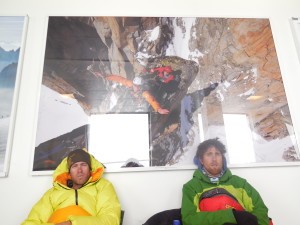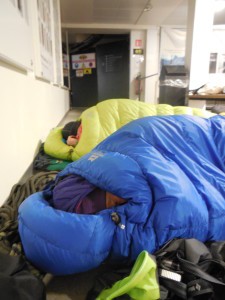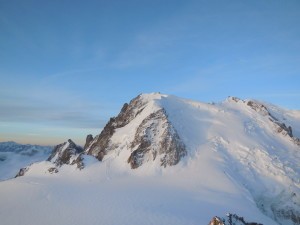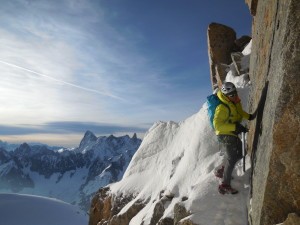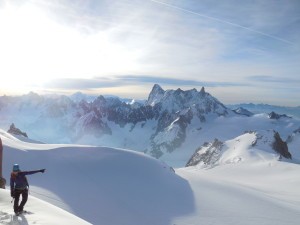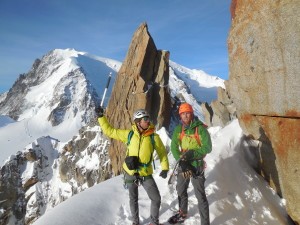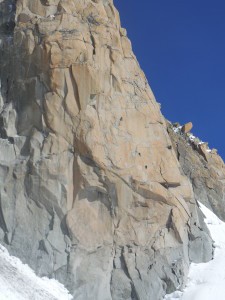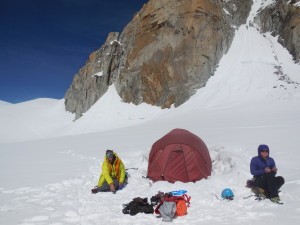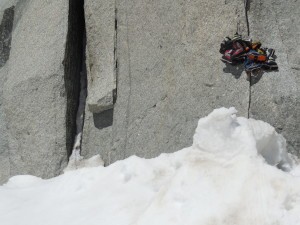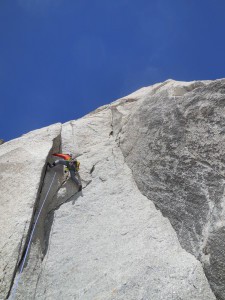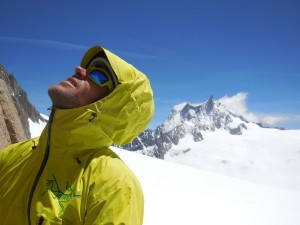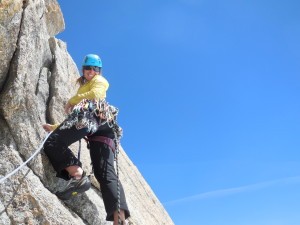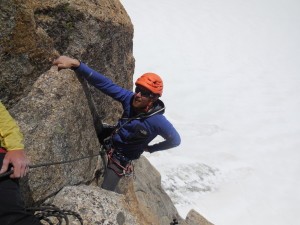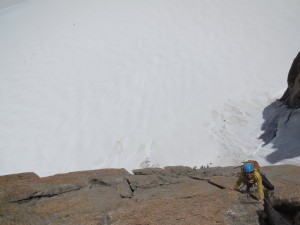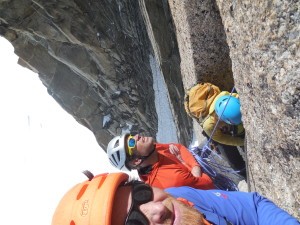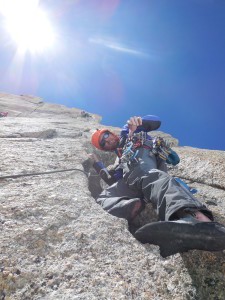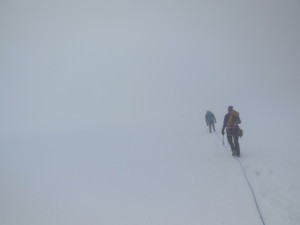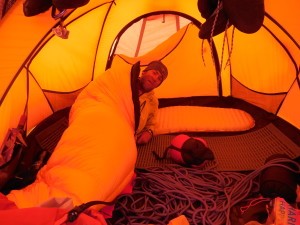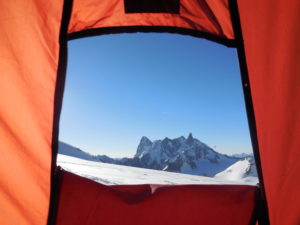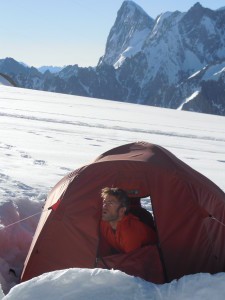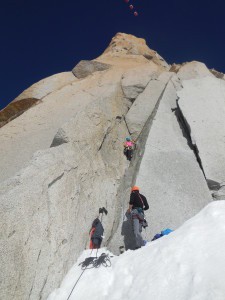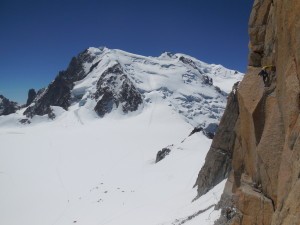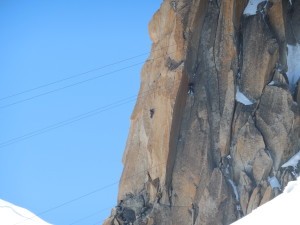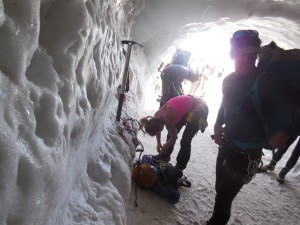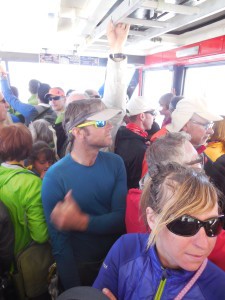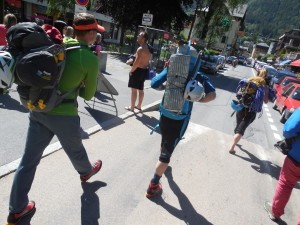Chamonix Dispatches, June 22 – Acclimatization
Gripped editor Brandon Pullan is in Chamonix for a month, at first for the Arc’teryx Alpine Academy, now climbing some of the area’s classics.
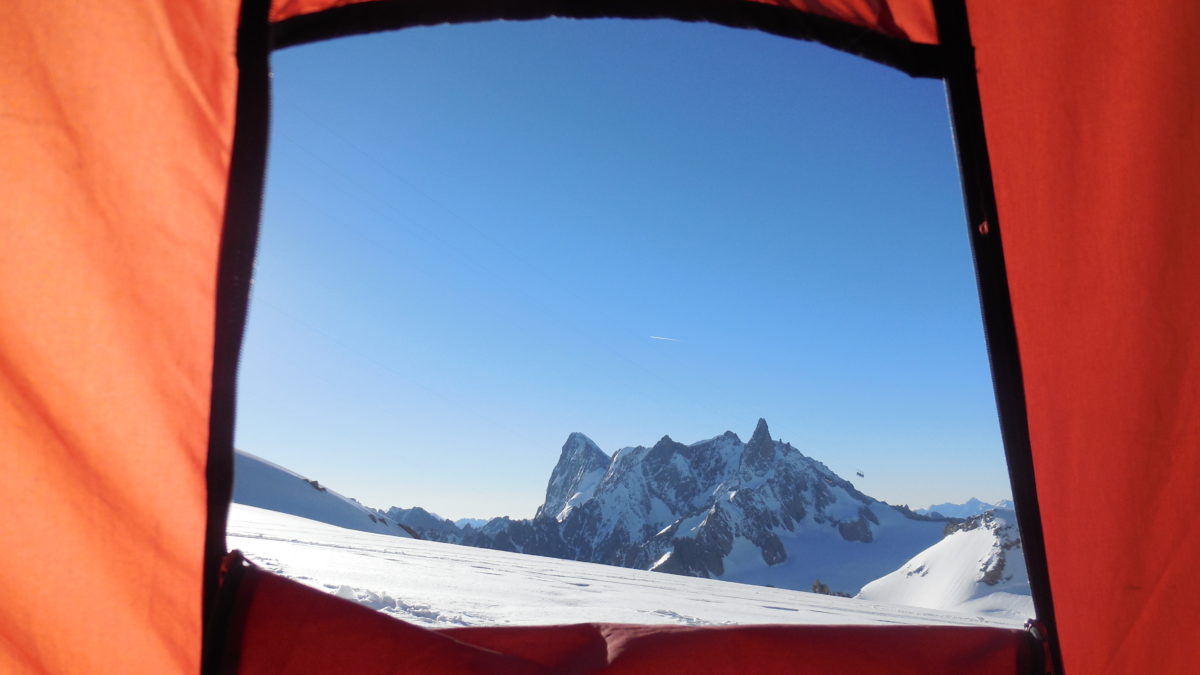
Chamonix is nestled into the valley between the Aiguille Rouges and Aiguille du Midi. It is widely regarded as the birthplace of alpinism and is at the cutting-edge of modern mountain sports.
Valle dell’Orco
In my first Chamonix dispatch, I talked about the Arc’teryx Alpine Academy and some of the local moderate routes. This last week brought good weather, bad weather, new friends, old friends and some world-class climbing in Italy and France.
As the weather turned on Monday, we looked for other climbing options. Will Woodhead, Anna Smith, Paul McSorley and myself were ready for a few days of rock climbing. I touched base with someone I met in Canada nearly a decade ago, Nicole Berthod, little sister of famed crack climber Didier Berthod, who lives an hour from Cham. We suggested Italy’s Valle dell’Orco and Nicole said she was in. Orco, known as Europe’s little Yosemite, got crack-master McSorley stoked for some splitters.
We piled into two cars, took the tunnel beneath Mont Blanc and into Italy. Passing castles in the Aosta Valley, Nicole pointed out the five-star routes while the other three followed us in Woodhead’s Jaguar. Along curving roads, through small Italian villages, we left Aosta Valley. We stopped in Villenueve as Nicole knew about a cheap gear shop where we could buy chalk and tape.
Turning into Orco Valley, the clouds rolled in and the rain started. We drove up the one-and-a-half lane road, over cobblestones, sipping cappuccino under a rainy sky. The granite was wet, but Nicole knew of an area we could climb in the rain. We racked up and a nice Italian man stepped out of his house and pointed us to the trail through his backyard. After two minutes we were at the crag. McSorley knew one of the climbers, Mike, who he met in Patagonia. We roped up and started climbing the gniess routes that were graded 6a to 7b. I whipped on a 6c+ (5.11+) while Anna and Nicole sent 7as (5.12) to my left and right. Then Nicole walked a 7b+ (5.12+) and I realized that when people say Europeans warm-up on 7as (5.12s), they mean it.
We left the crag and drove along puddled streets until Nicole stopped us next to a roadside boulder, a splitter 6b (5.10+) that McSorley laced up for. He made quick work of the route, sans rope, then downclimbed it for a victory lap. Nicole chalked up and cruised it, the rest of us tucked our tails and we hit the road again. Our new friends, Mike and Simone, lead the way until we stopped.
At the end of the road was a big building, the Rifugio Massimo Mila, in front of it was a lake and behind was the Paradisio Mountains. We stepped in and the young folks working invited us for dinner and drinks. After a delicious Italian dinner, we sampled the grappa, wine and spirits and played music until the late hours.
The following day, the weather was still bad, but Nicole knew where to take us, back to the Aosta Valley. After stopping for some more Italian coffee, where old men played cards on a sunny patio, we arrived at the parking for Cubo. We packed up and approached the large 30-metre boulder hidden in the woods. Just another European crag I had never heard of, 20 routes, most 8b+ (5.14). We climbed the 6cs and 7as, Nicole onsighted another 7b+. As we climbed, the weather improved and we started to talk about alpine plans for the following day.
We headed back through the Mont Blanc tunnel into Chamonix and Nicole dropped me off. She was off to the Dolomites with her family for some more rock climbing.
The Midi
The following day, the four of us made a plan to take the lift to the top of the Midi, bivy and climb the south face of Mont Blanc. As the lift carried us, at 5:30 p.m., the clouds closed in and the snow started. There were only six of us in the lift, the lift operator, us and a keen French skier aiming for the Gervasutti Coulior, we planned on climbing the Gervasutti Pillar. We bivied in the lift station, a standard tradition, and made small talk with the other teams hunkered down for the night.
In the morning we geared up and walked down the ice tunnel and out of the Midi station. Woodhead was feeling ill from the altitude and headed back down to town to recover. Stepping out into the alpine and onto the south ridge of the Midi, McSorley noted that it had snowed at least one-foot and the drifts were up to a metre. Our headlamps lit the snowy ridge as nearly 40 people headed up Mont Blanc’s Tacul Face to our north. We put our tent down and noticed the guided parties were turning around on the Tacul Face, the avalanche hazard was high due to the snow storm. We changed our plan.
We decided to let the snow clear and did an alpine-start lap on the classic Cosmiques Arete. As the sun started to rise, the Grandes Jorasses lit up and lenticular clouds formed. Atop the Cosmiques, we stopped for a cappuccino in the station, another tradition. The first lift arrived at 8 a.m. and with it nearly 100 people. As the lifts arrived, the crowds came and what a sight it was. Hundreds of people roping up, making the descent down the south ridge of the Midi, all in a row. We looked at Mont Blanc and the Gervasutti Pillar was not in condition, we planned on some south facing crack climbing.
McSorley had been in the area before and took us to the south face of Pointe Lachanel. Over 15 parties were climbing above us, on one of the two classic routes. McSorley started us off on the Contamine 6b (5.10+), many pitches. Anna took the second pitch, up a splitter three-crack corner that ended with a steep pull onto a ledge. With a number of options, McSorley chose the hanging offwidth above us and set off. After an impressive 60-metre-pitch, he brought us up into a shallow corner. I took us up and around onto an icy ledge. McSorley took the last pitch, a stunning 40-metre 5.11 finger crack up a face. As the sun left us, we headed down. Three parties of four German women headed down ahead of us and above us. What a way to spend the day.
Back at the tent we drank a bottle of wine and were asleep by 7:30 p.m., nothing like an alpine sleep. In the morning, Woodhead joined us and we climbed the south face of the Midi, up the Voie Kohlmann. The route was first climbed in 1960 by Pierre Kohlmann and party. It is a solid 160-metre route. Anna started us up a 5.10+ variation start, thin fingers and stems. I took us up the next 5.10, a 40-metre corner that would be busy every weekend if it was in Canada. McSorley led off with Anna and Will led as I followed, another splitter 5.10-pitch that ended on a large snowy ledge. Anna took us to the top up a 60-metre stretcher, the last 20 metres was a strenuous offwidth, she crushed it.
Back in town, the summer solstice party was kicking off. We had beers with Alaskan hardman Andy Houseman and world-class climber photographer Jon Griffith. I met the local sender who onsight-soloed the Frendo Spur in the morning and was working on a new route on the south face of Mont Maudit the day before.
Back at my rented flat, I picked up the history book and read through a few more pages. In 1938, the first ascent of the Walker Spur on the Grandes Jorasses. Nearly 20 years later, the first ascent of the Bonatii Pillar on The Dru, soloed by Walter Bonatii. I could see the scar on The Drus from where the pillar was before it fell off in 2005. The scar is hundreds of metres high, I can only imagine how great the route was, before gravity took it down.
There is an old saying that on any given weekend, more hard sends go down around Chamonix than in a whole year in North America. It might be a stretch, but not by much. As the forecast looks good for Chamonix and Grindelwald, we plan on leaving the sticky rubber behind for some high alpine adventures.
